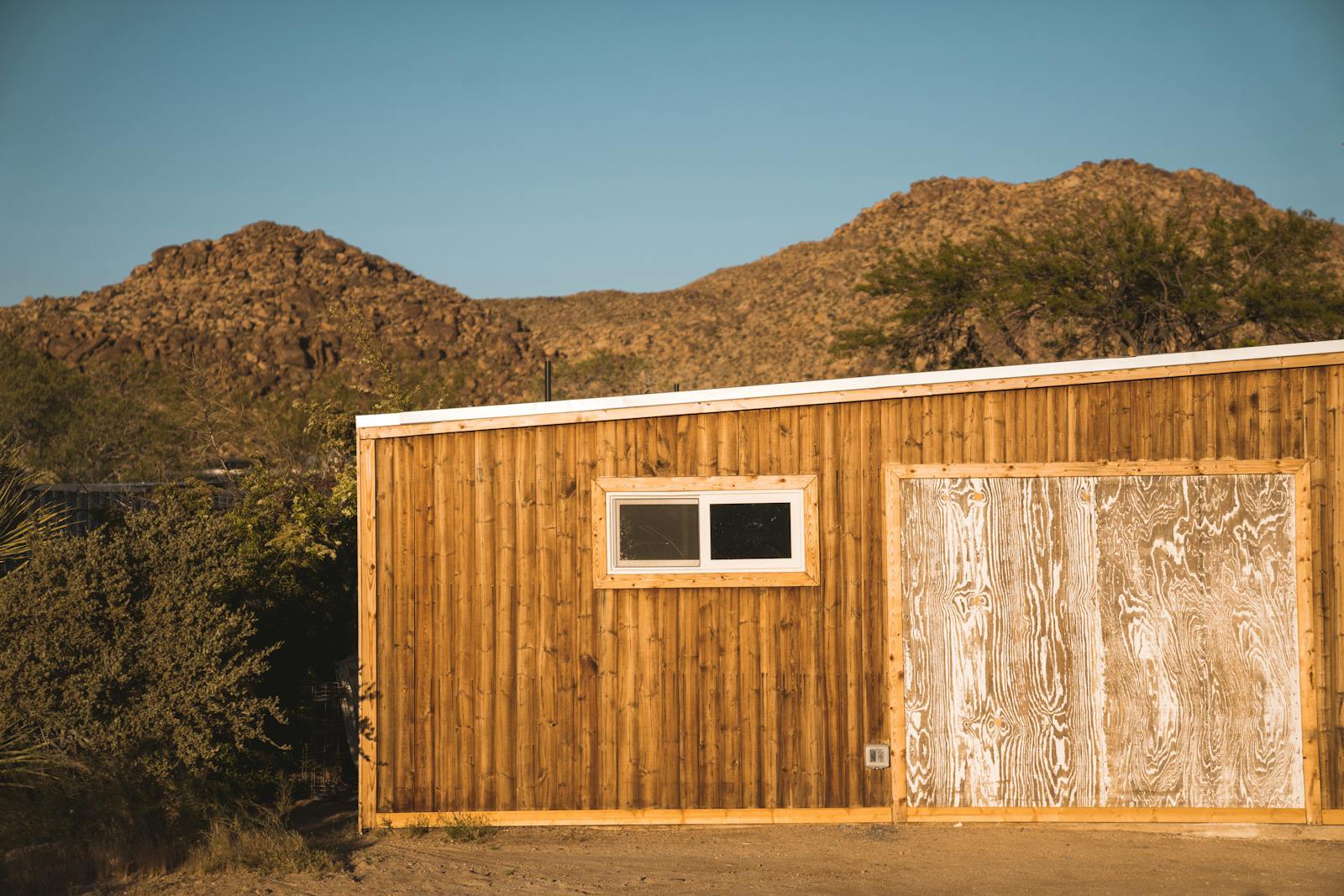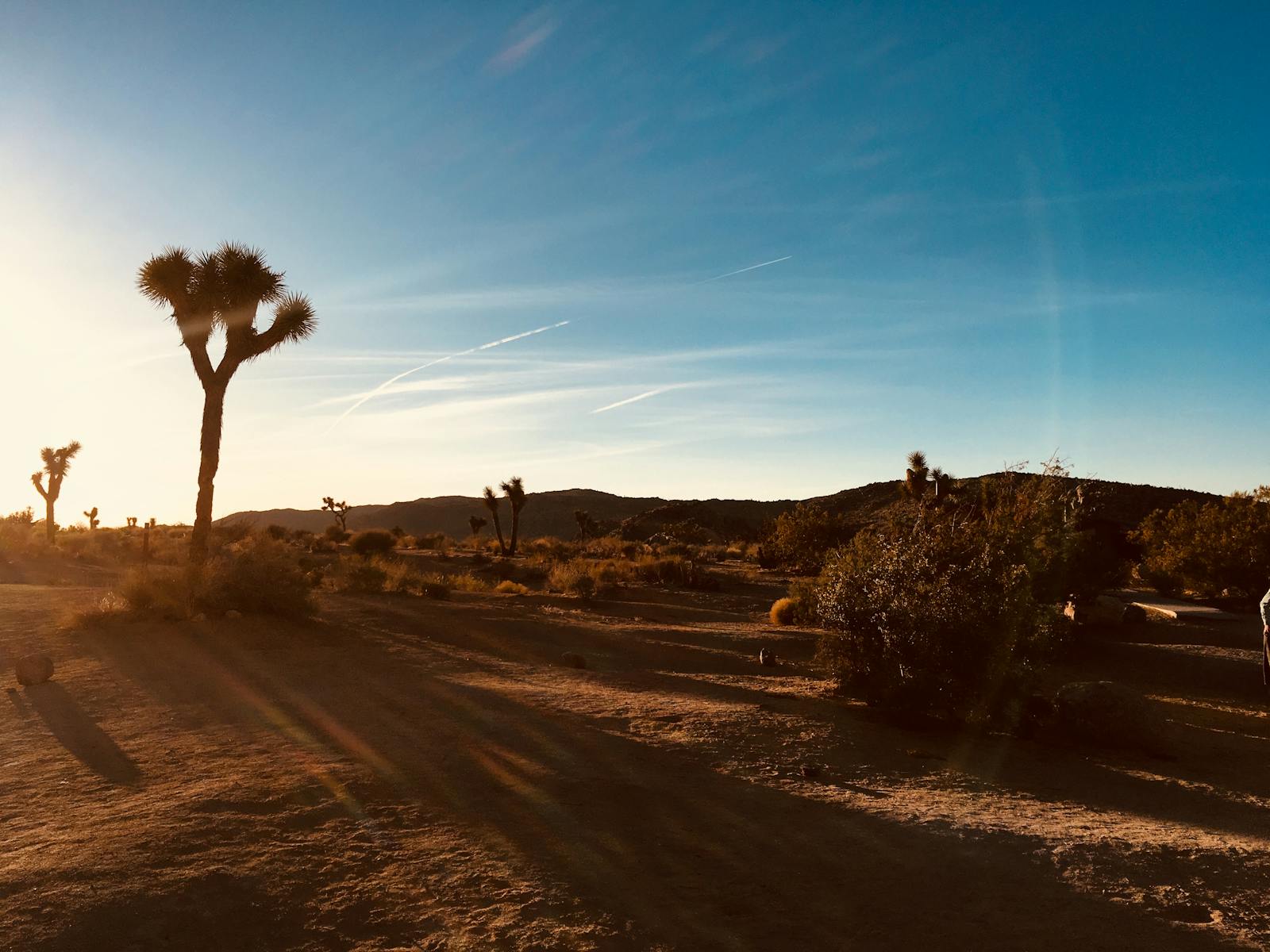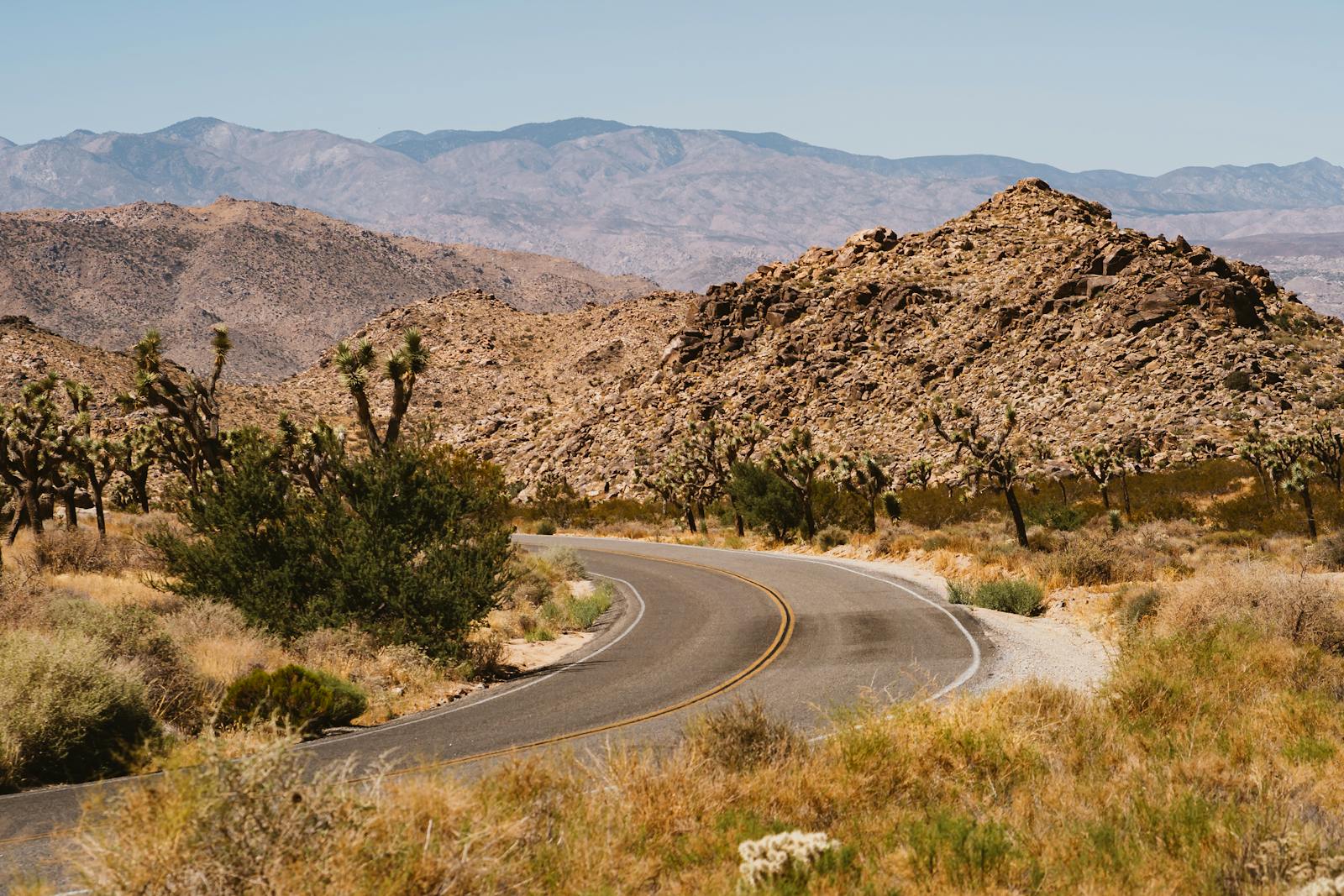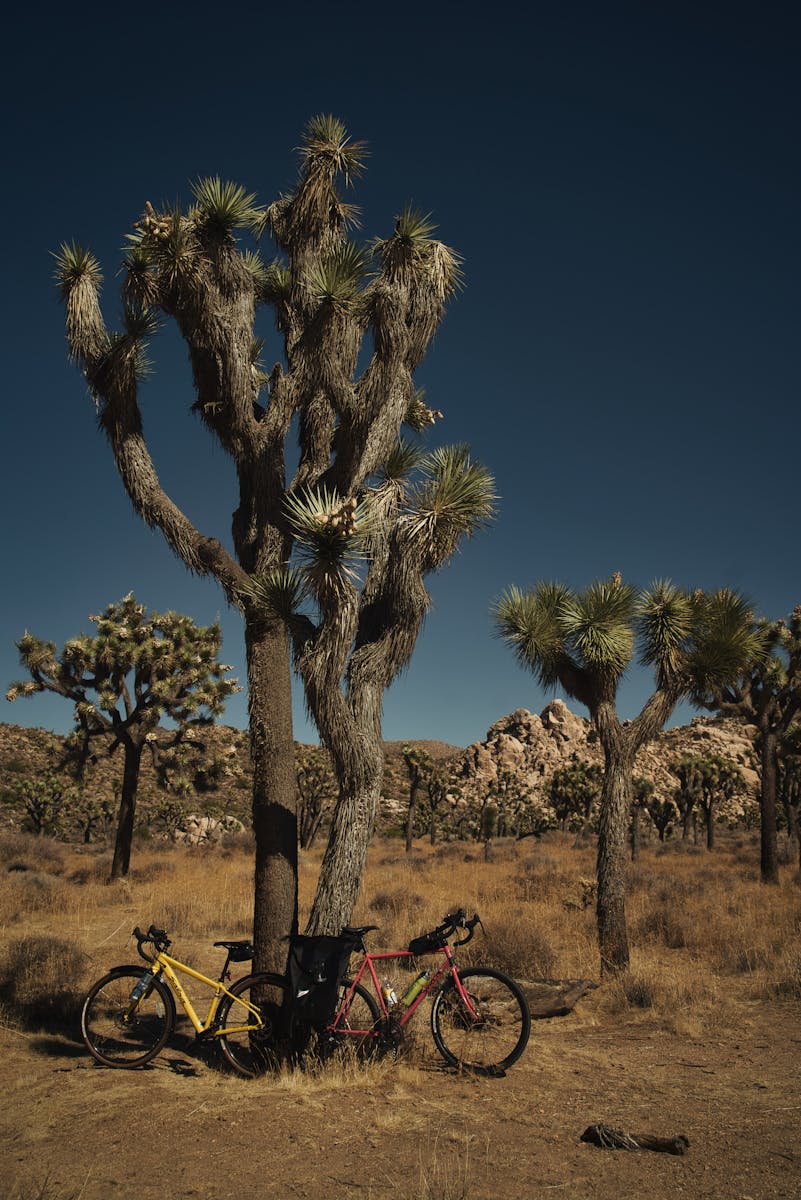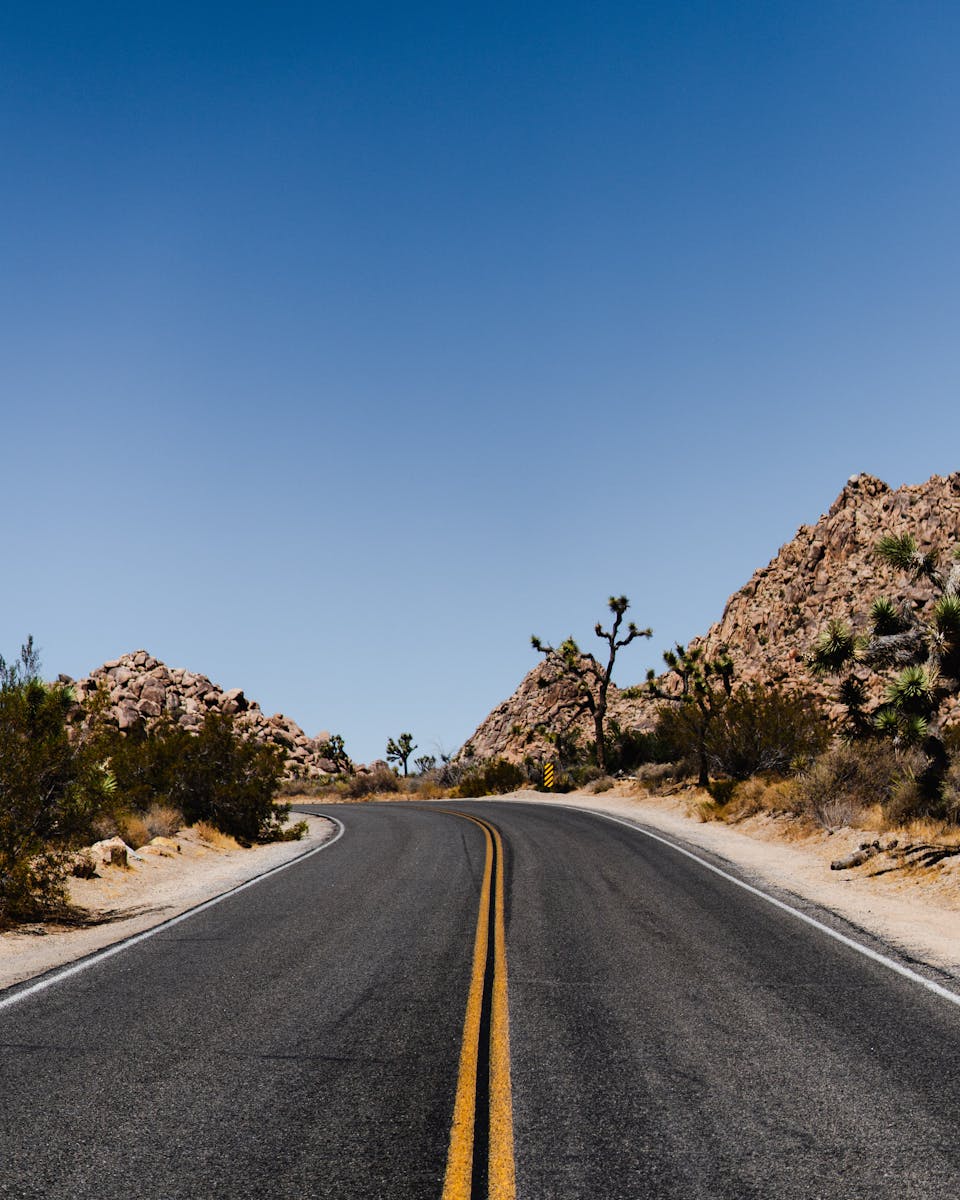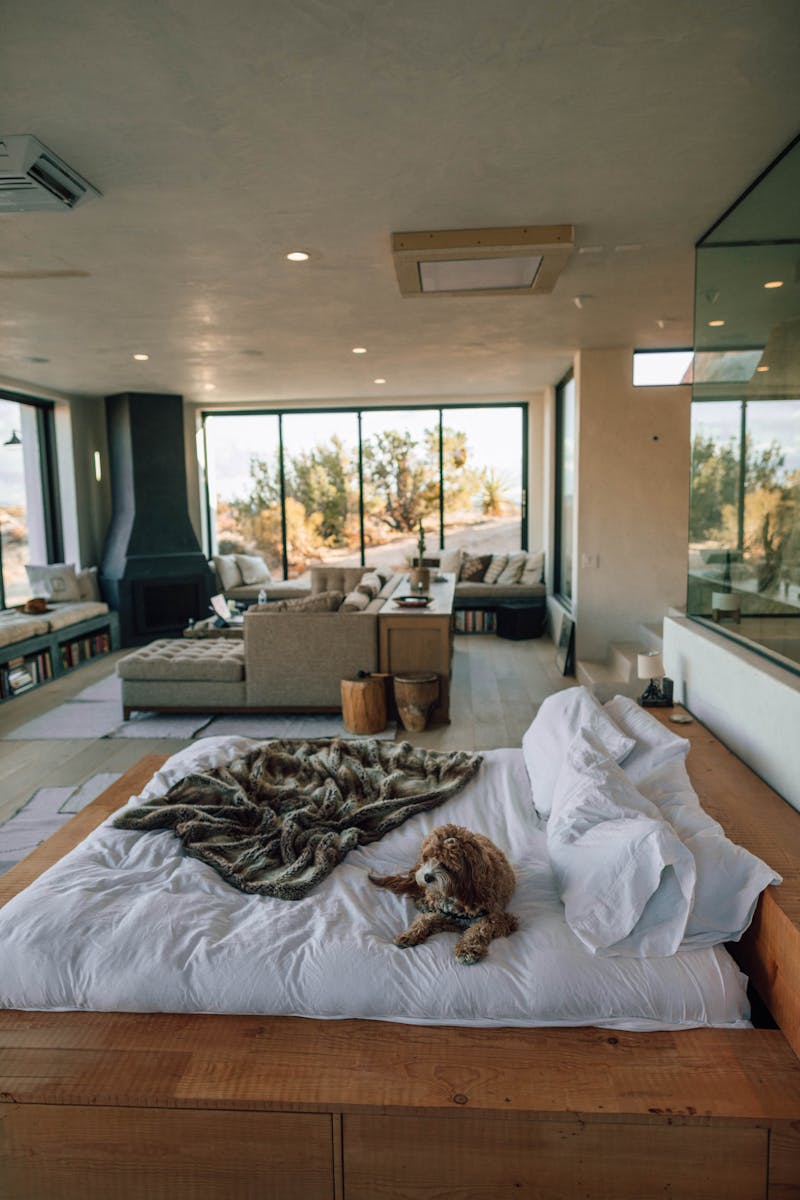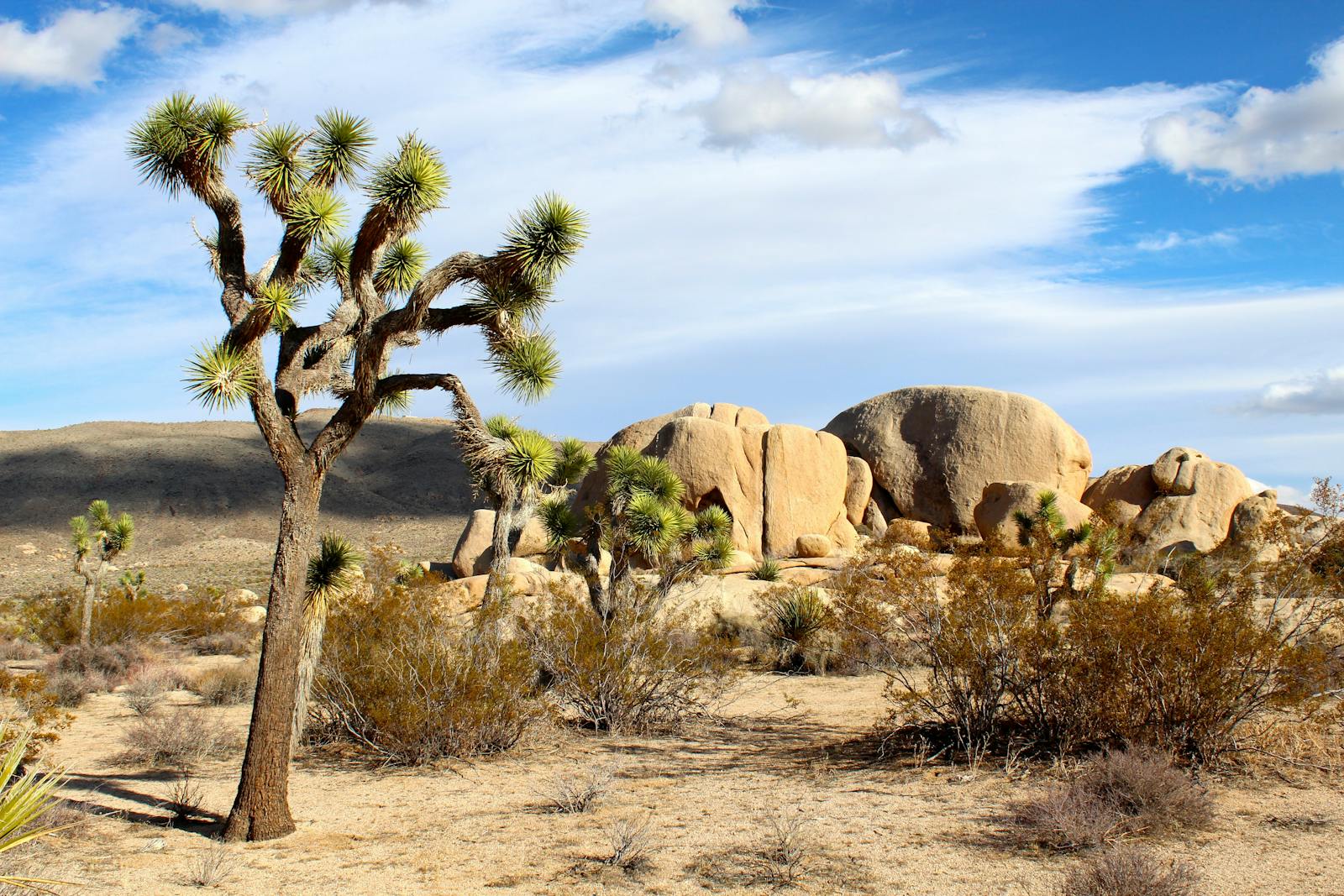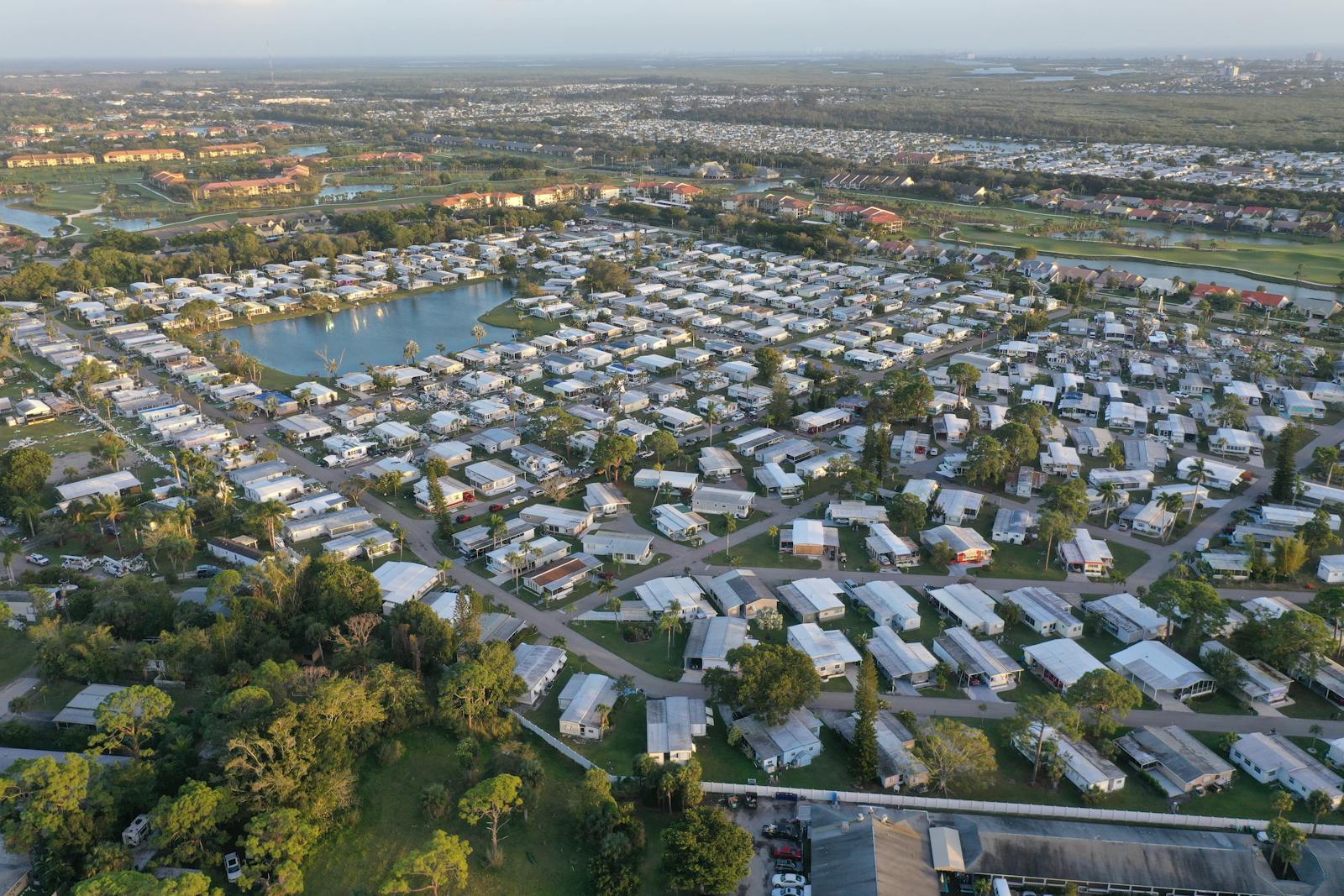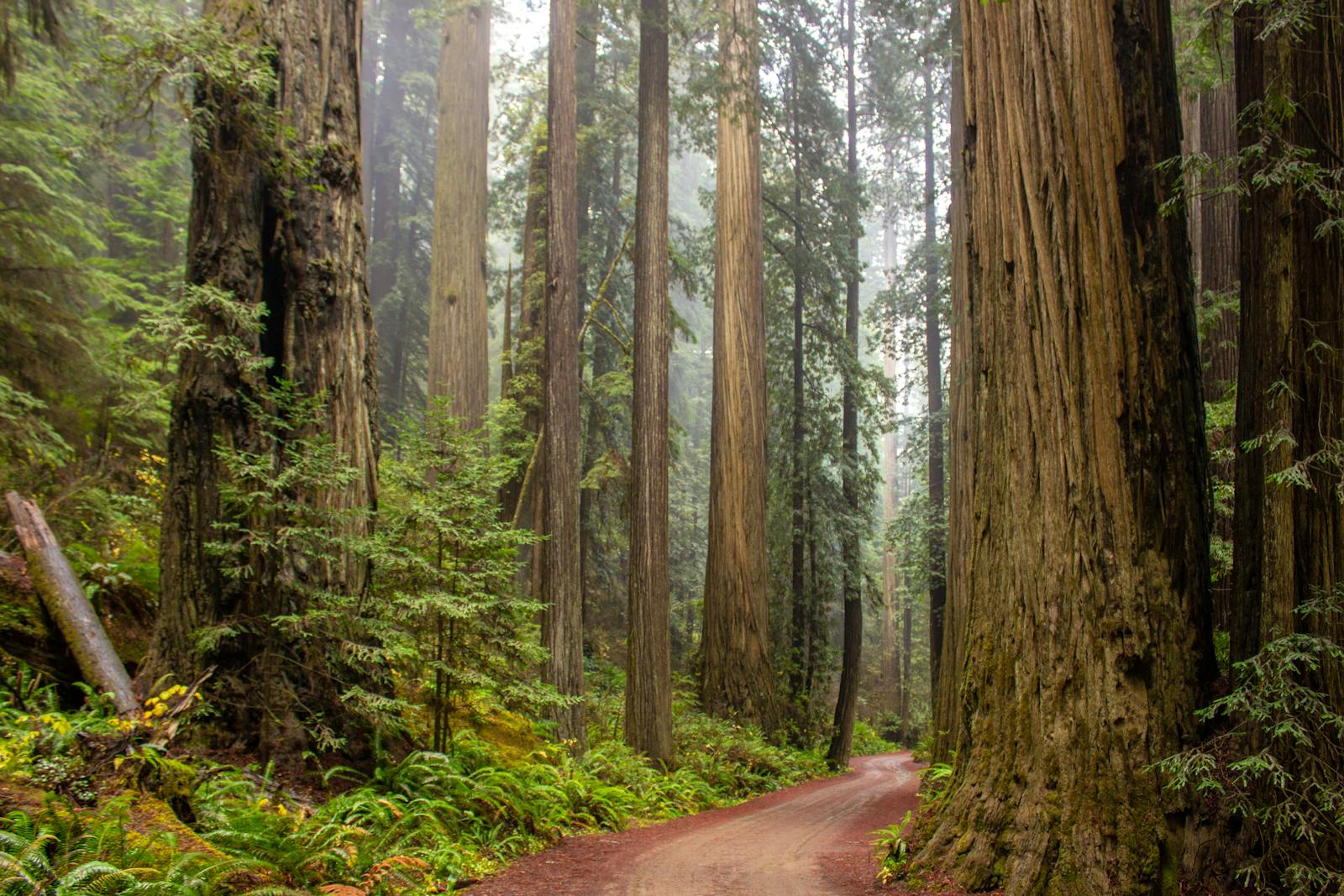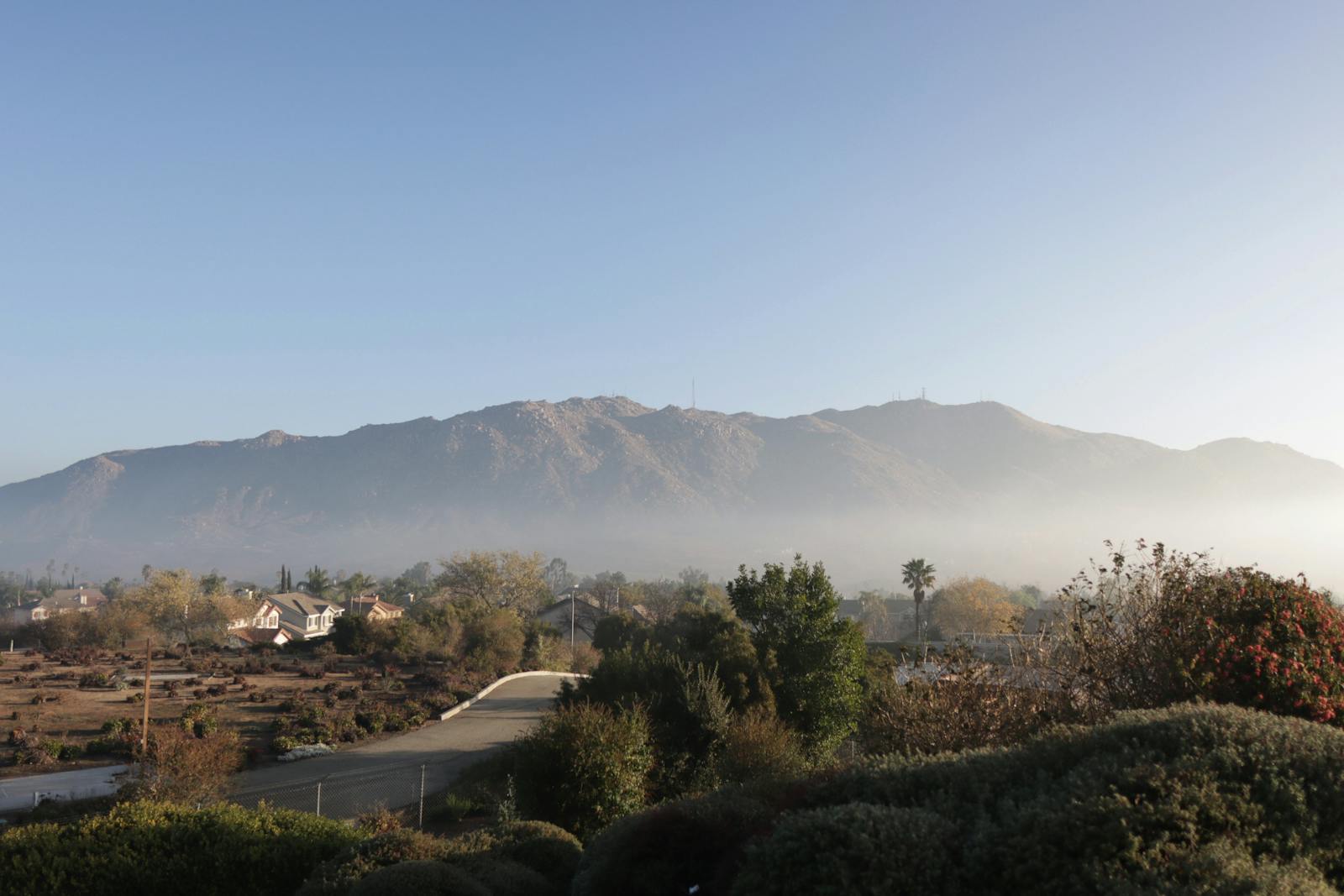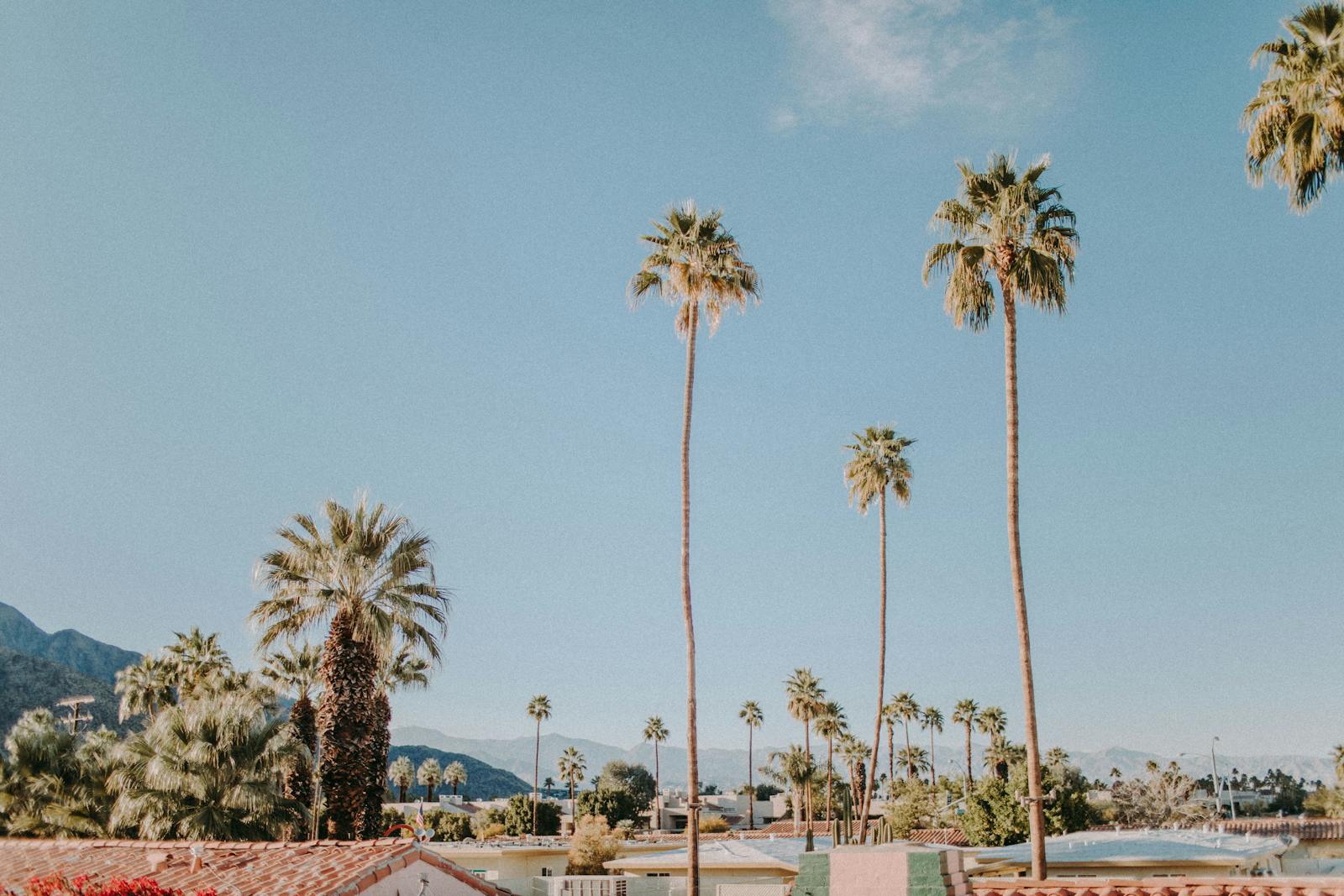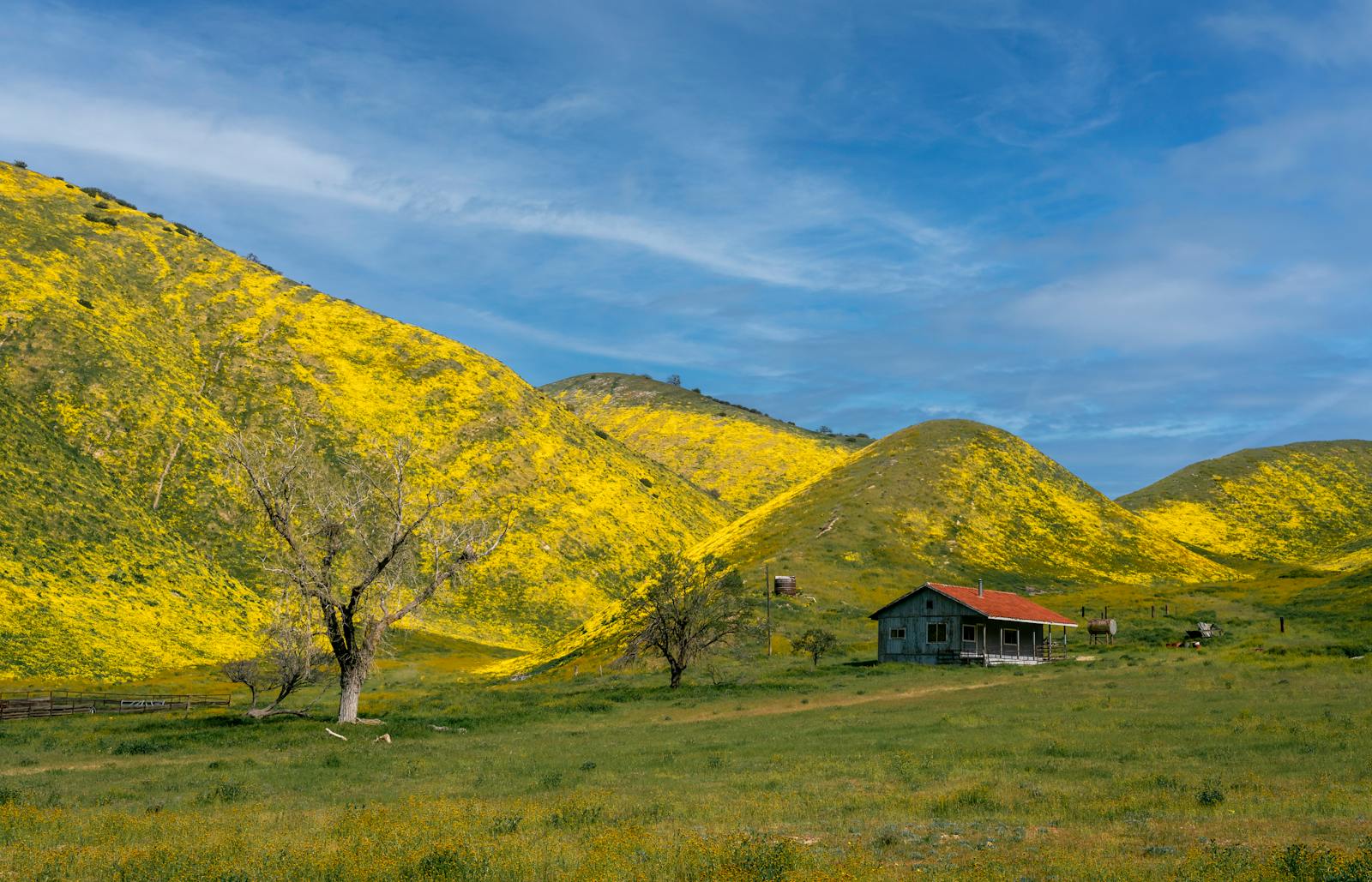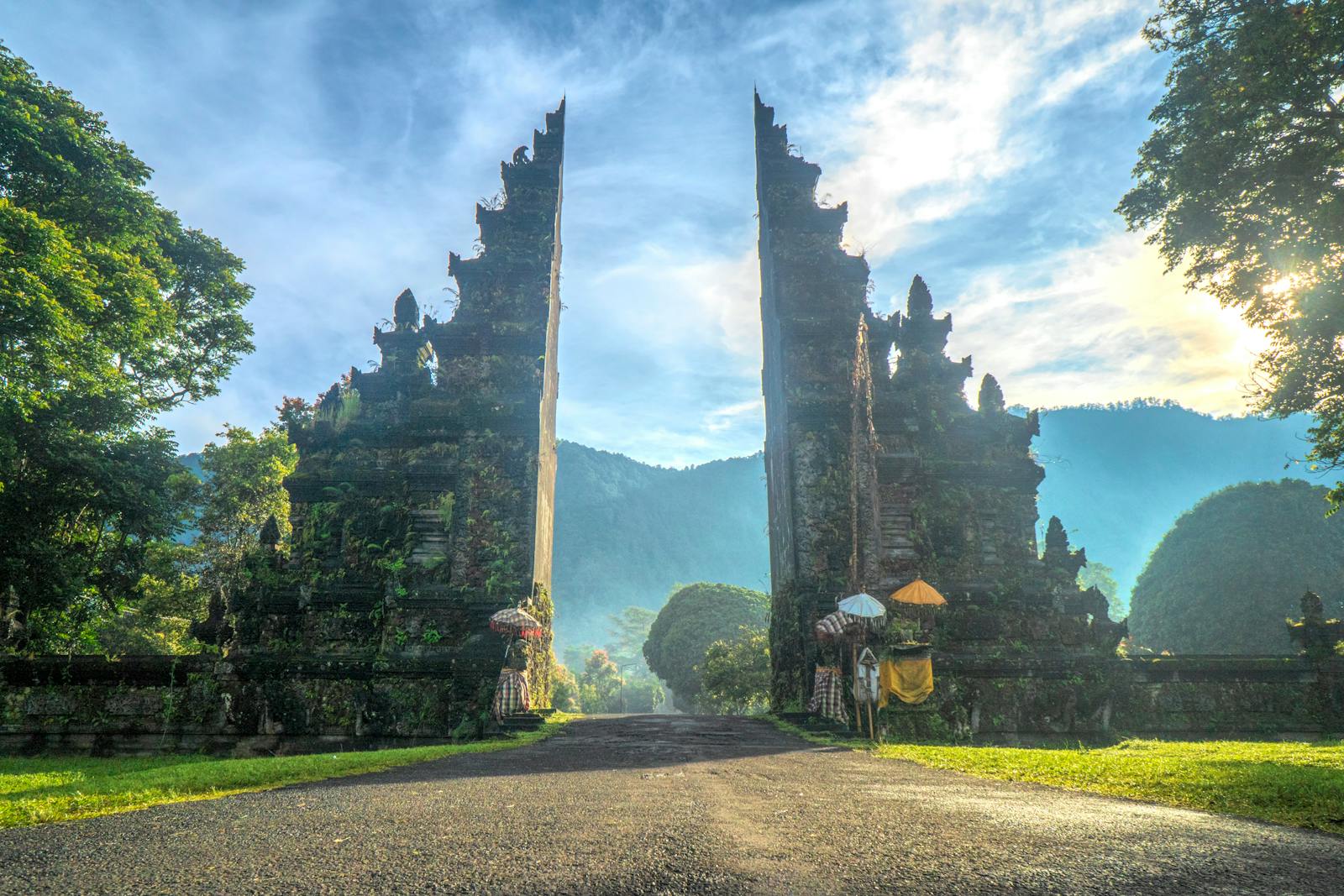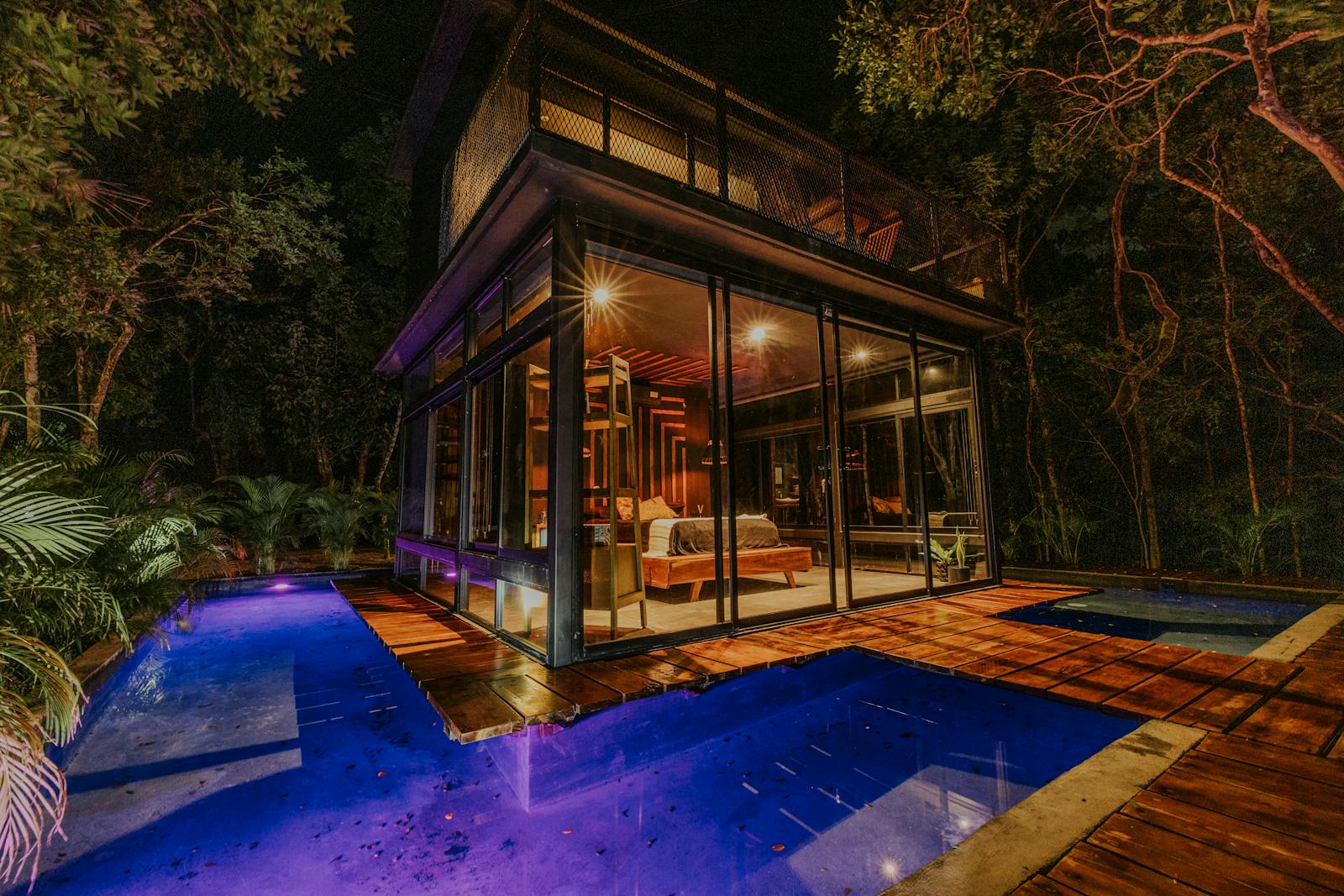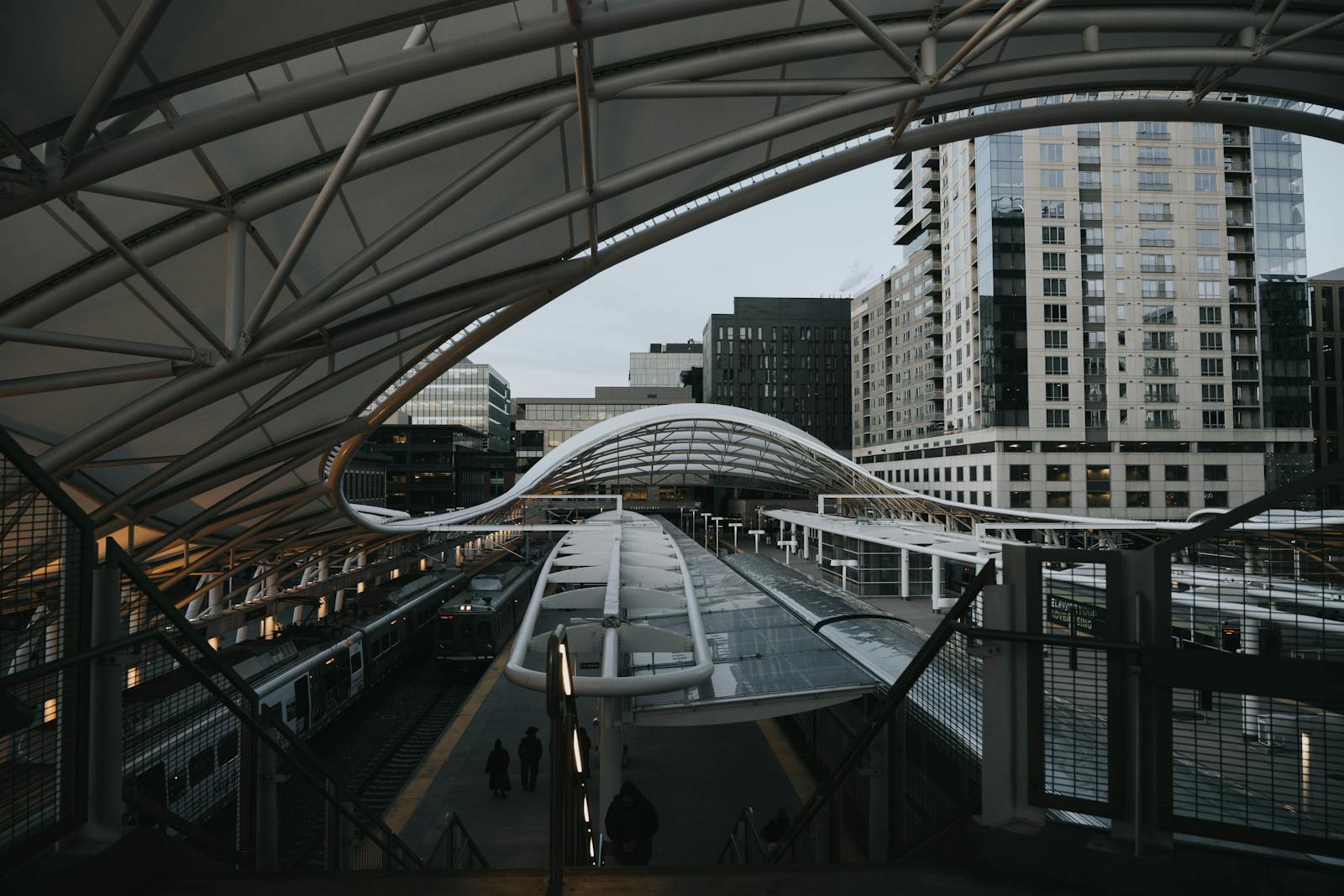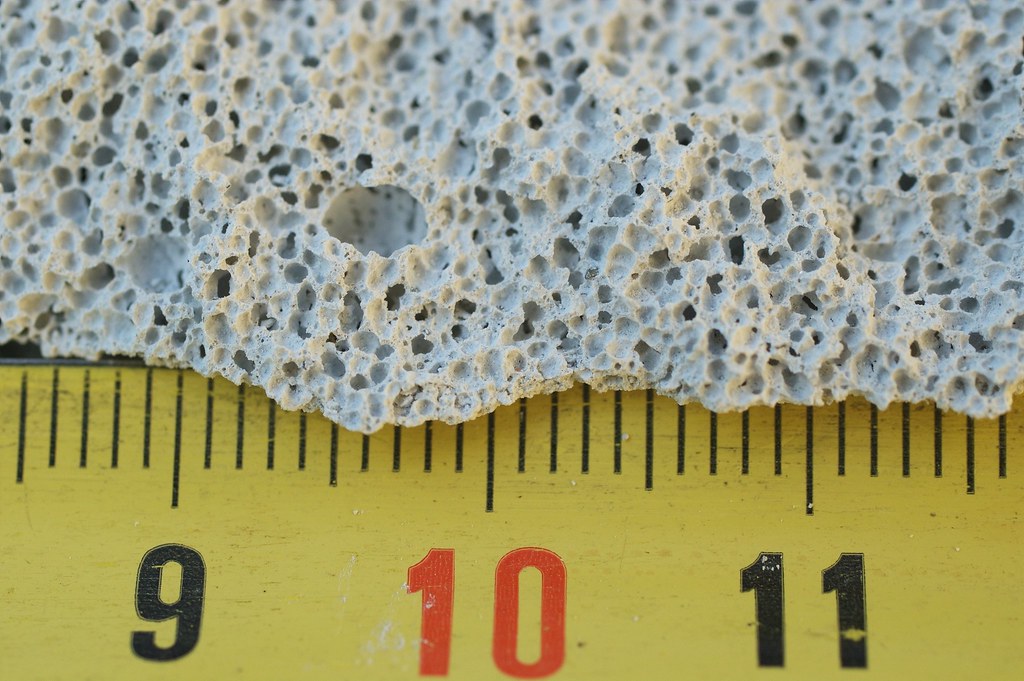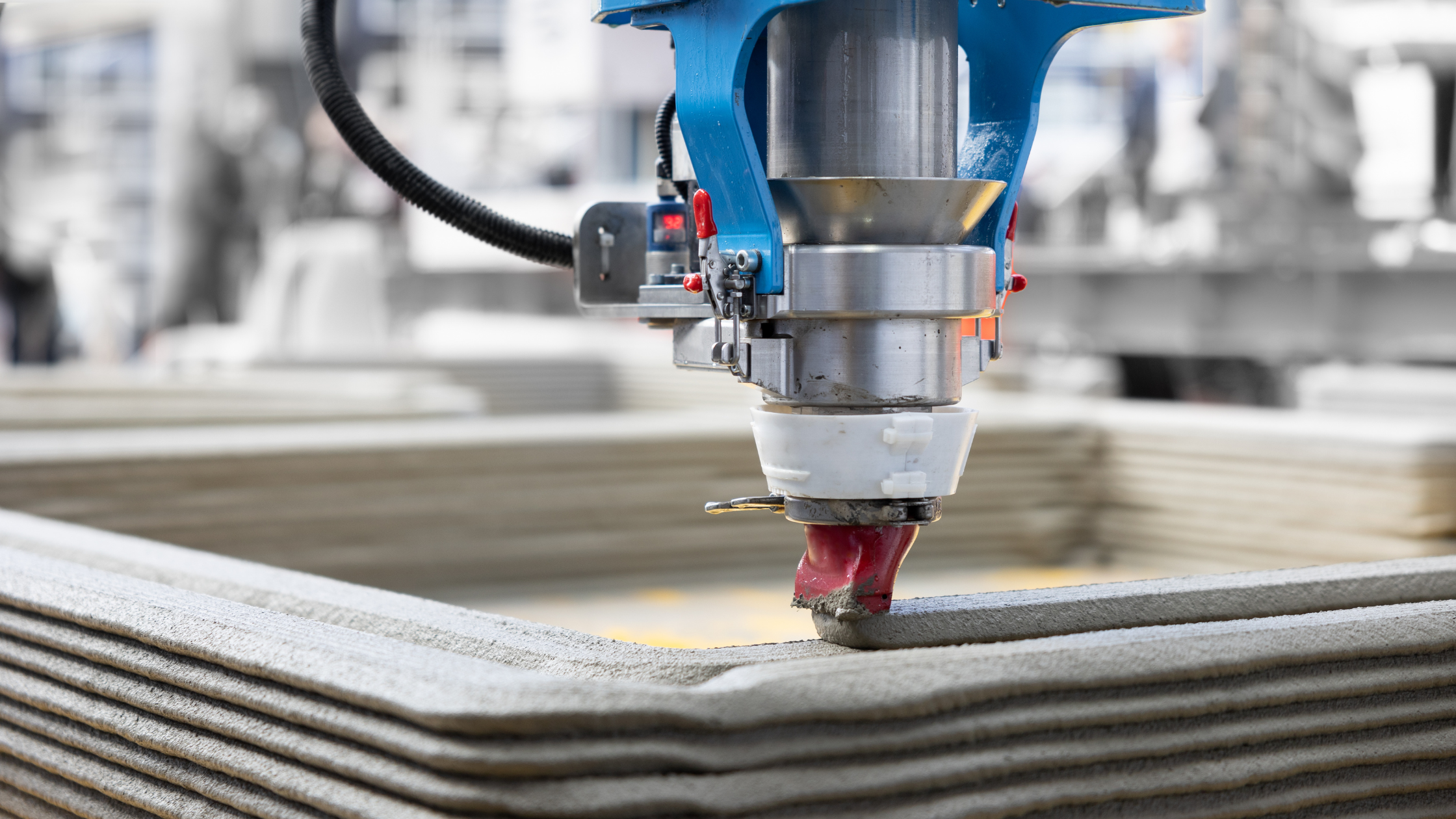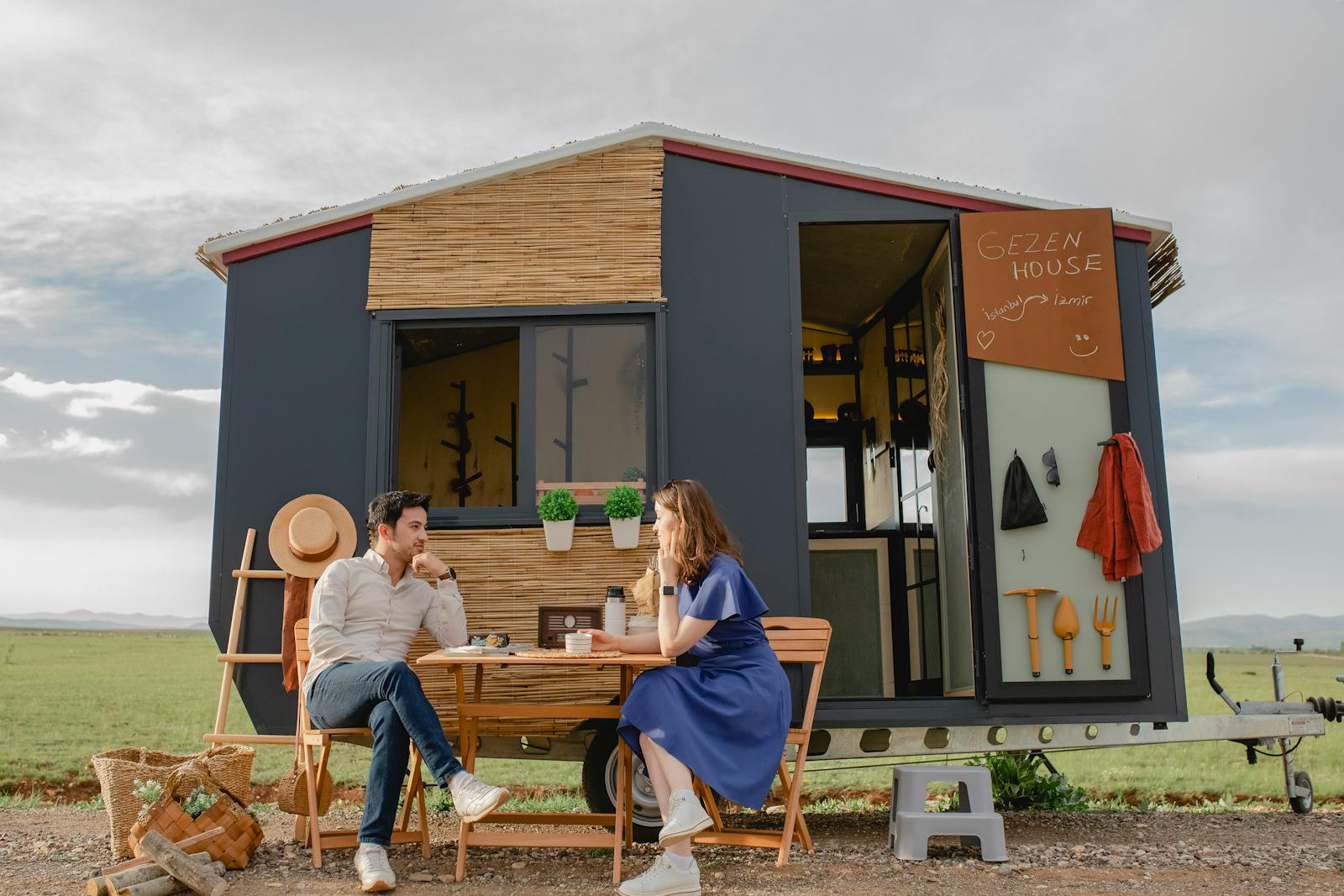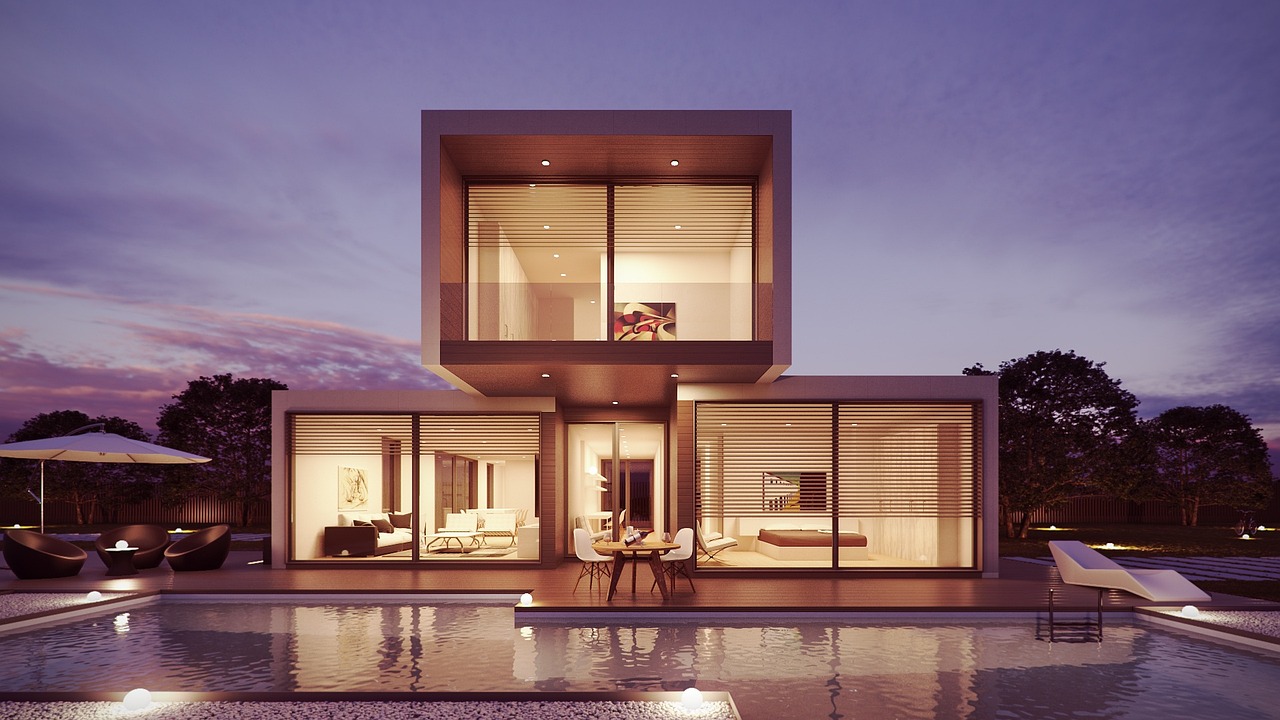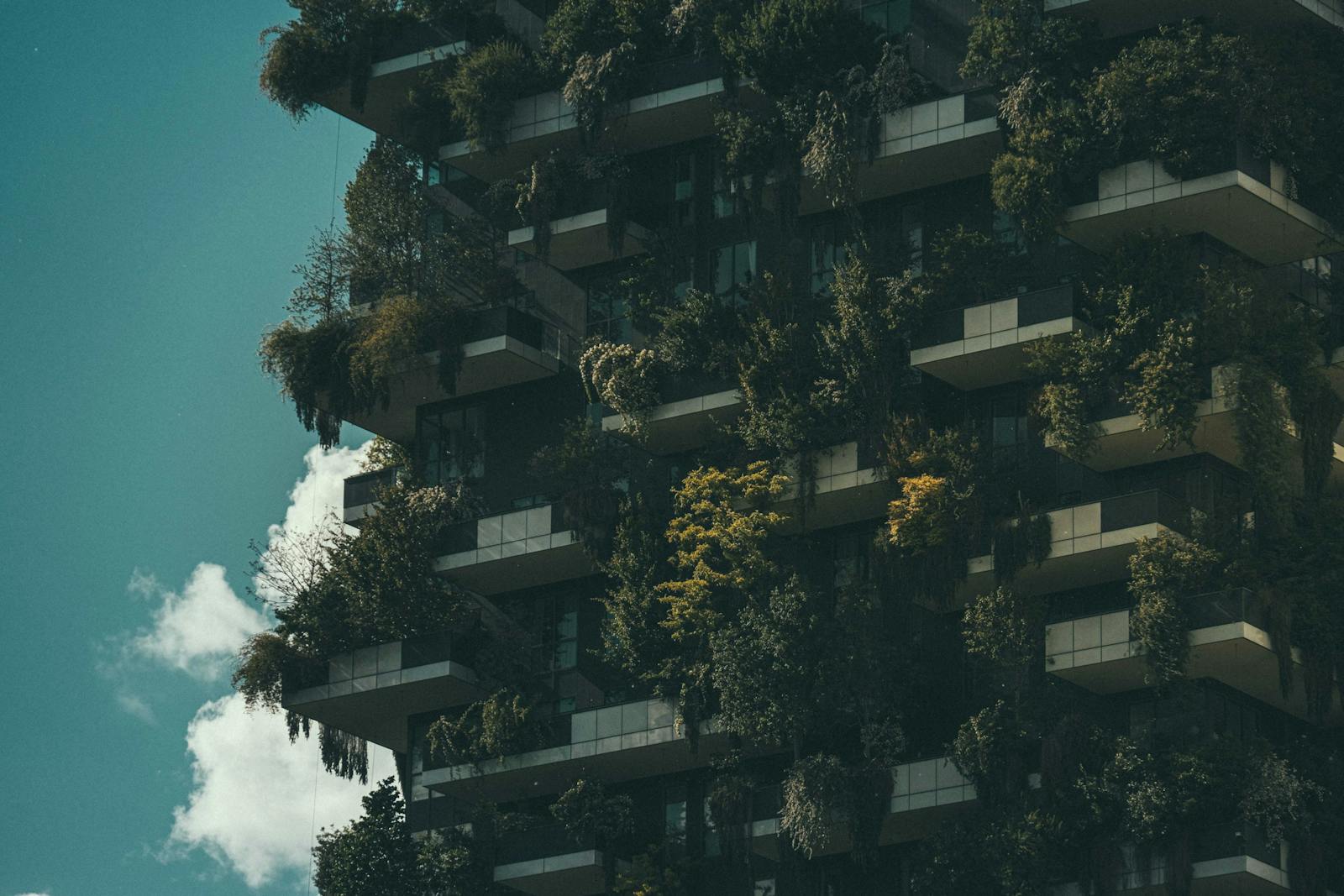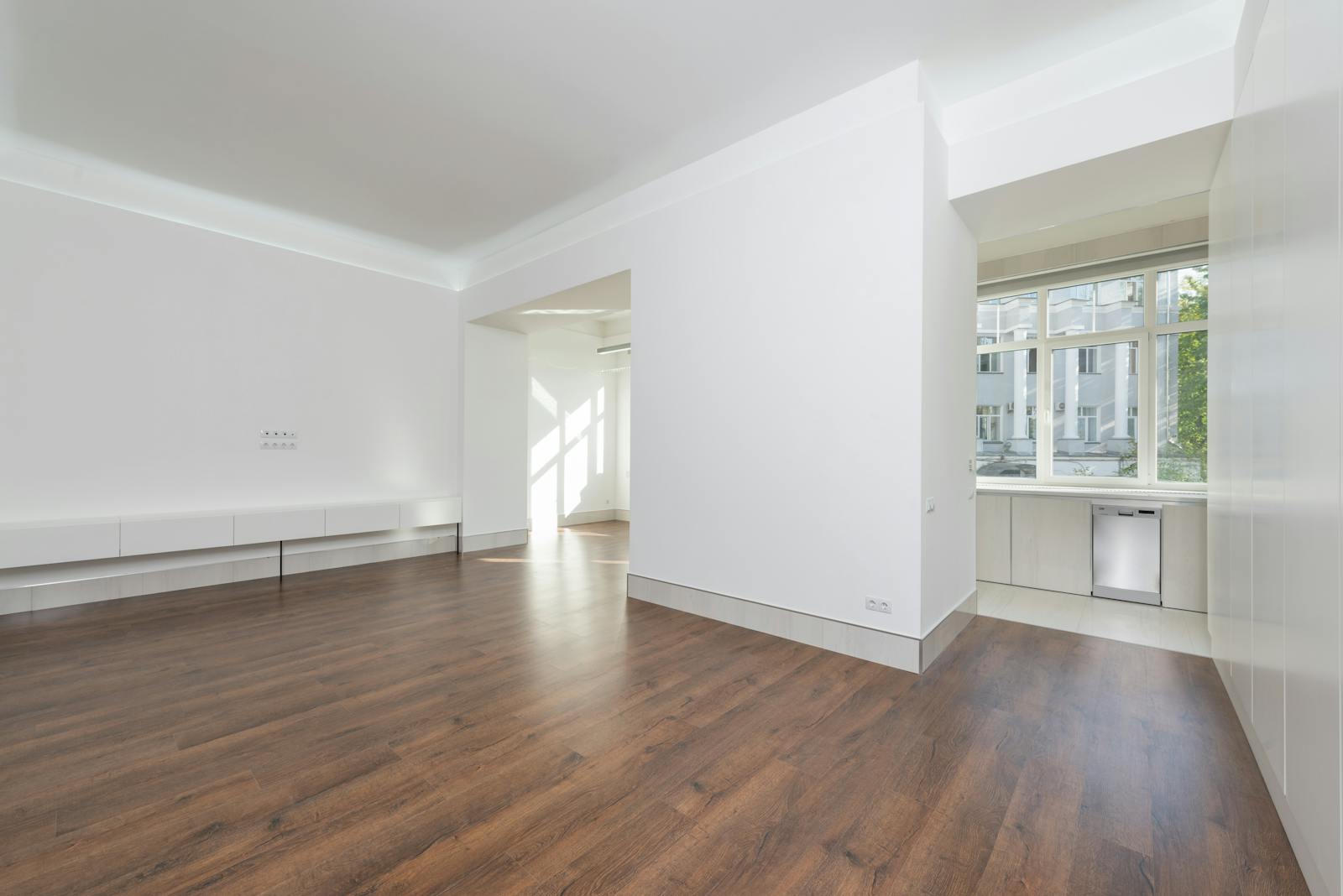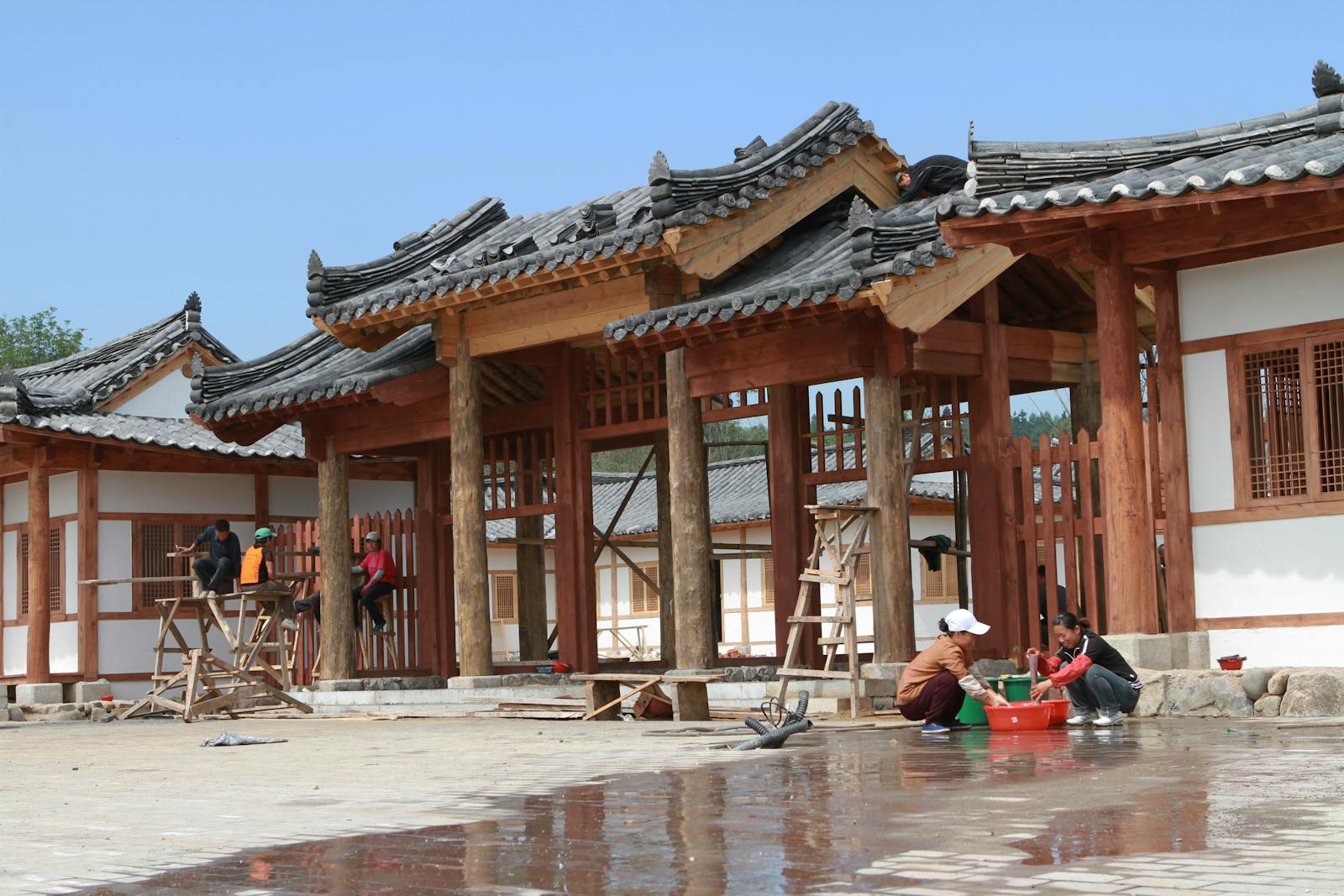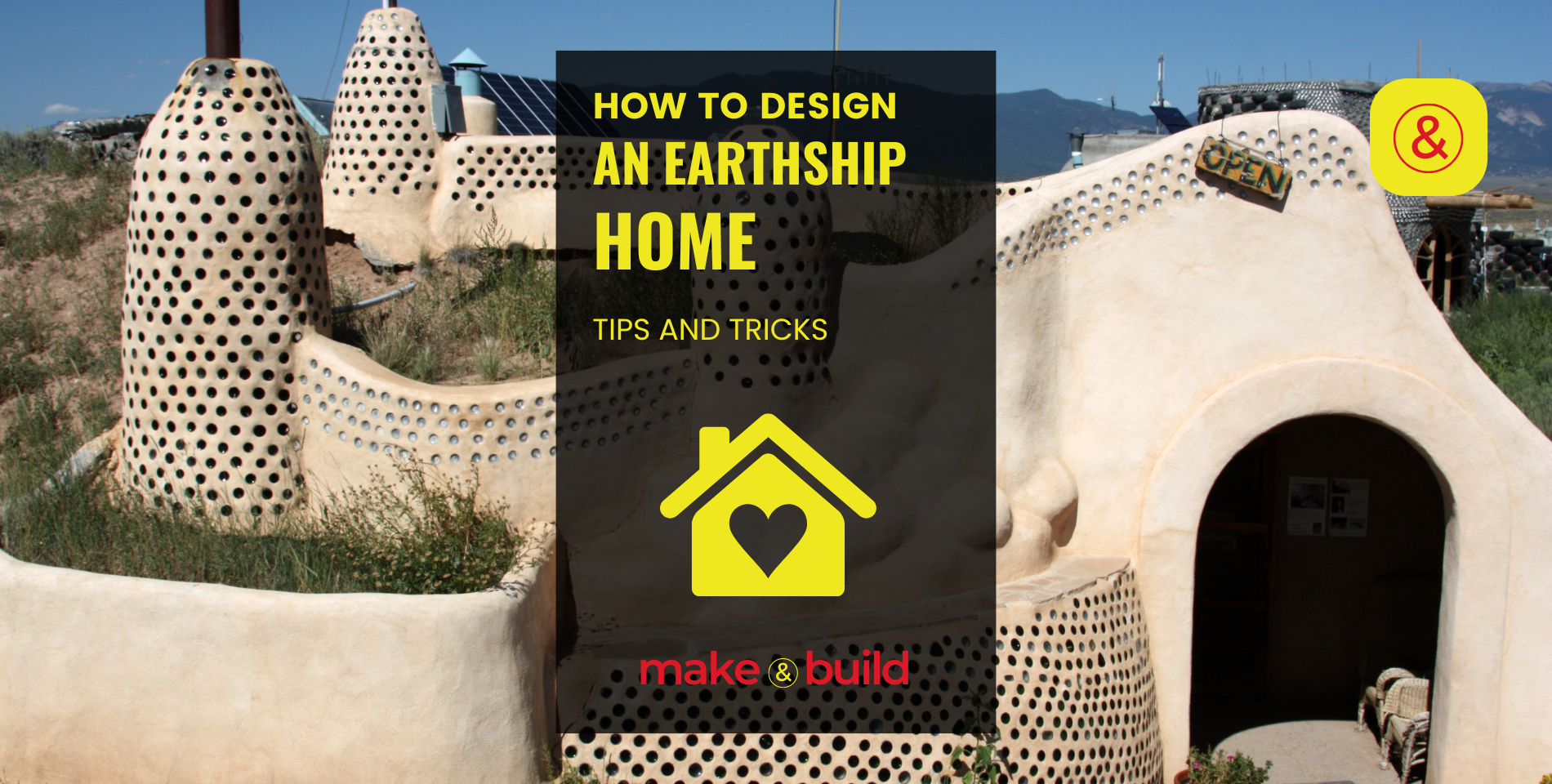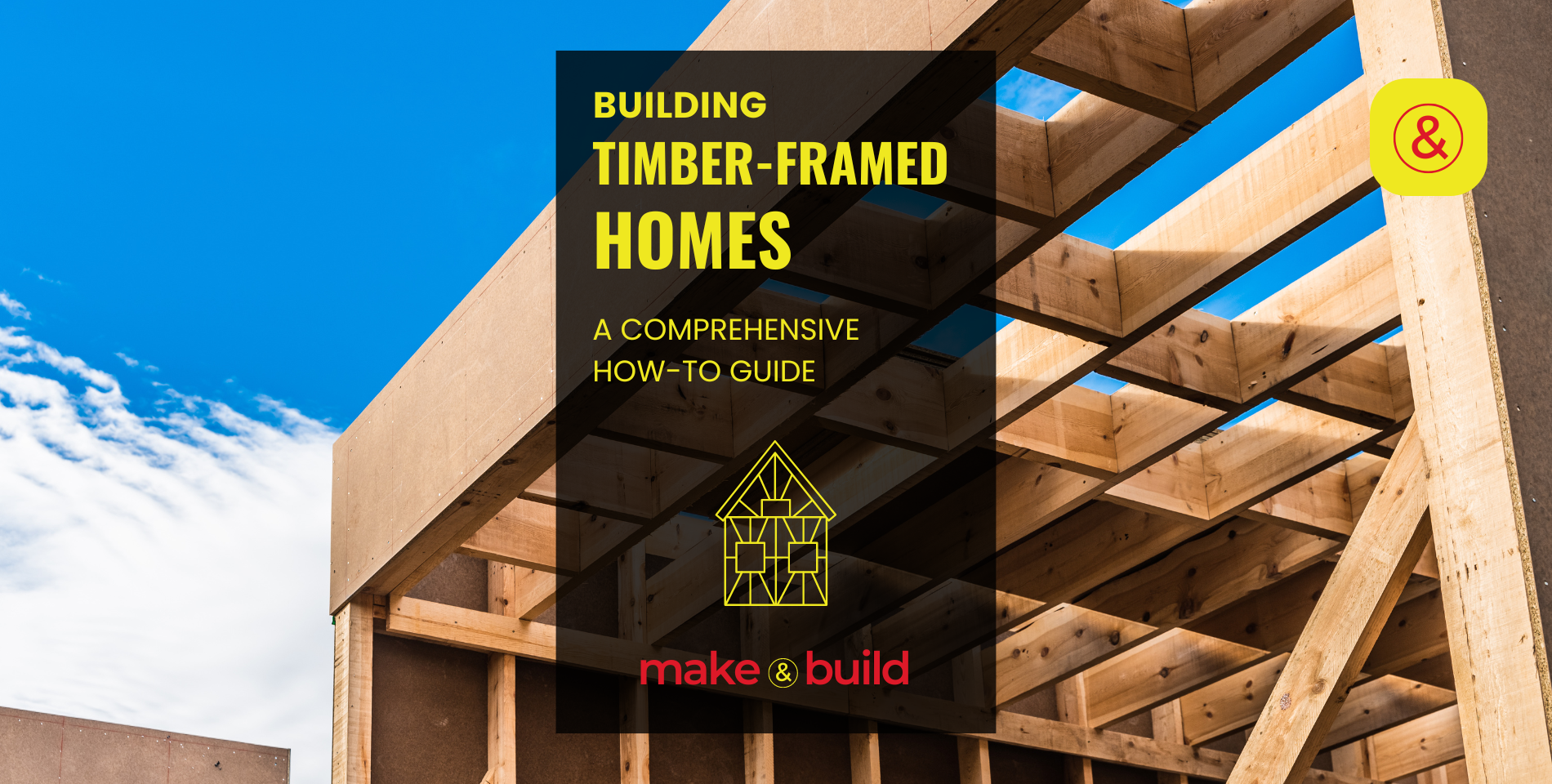Building in Joshua Tree, California, USA
Joshua Tree, California, offers a unique blend of rural development and sustainable building opportunities. With vast open land, eco-friendly construction methods, and increasing property values, it's an ideal location for off-grid and alternative housing projects.
Building in Joshua Tree, California, USA
Joshua Tree, California, offers a unique blend of rural development and sustainable building opportunities. With vast open land, eco-friendly construction methods, and increasing property values, it's an ideal location for off-grid and alternative housing projects.
Joshua Tree Building Insights
- Scores
- Building Insights
- Photos
- Video
- Building Costs & Affordability
- Zoning & Land Use Regulations
- Infrastructure Readiness
- Climate & Environmental Factors
- Sustainability & Green Building
- Construction Workforce
- Investment & Development Potential
- Permitting & Bureaucratic Hurdles
- Seismic, Flood & Disaster Resilience
- Urban Expansion vs. Rural Development
- Top Construction Methods Used in the City
✅ Overall City Development Score
🏛️ Ease of Building Permits & Regulations Score
📍 Zoning Flexibility Score
🏢 Land Availability Score
👷 Construction Workforce Availability Score
🪵 Material Accessibility Score
🔌 Infrastructure Readiness Score
💰 Cost of Construction Score
⏳ Project Completion Speed Score
🌡️ Climate Adaptability Score
🌪️ Extreme Weather Risk Score
💨 Air Quality Score
🚰 Water Availability & Quality Score
🏗️ Soil Stability Score
🌱 Sustainability & Green Building Score
🏦 Real Estate Investment Potential Score
📊 Cost of Living Score
📈 Property Value Growth Score
📝 Taxation & Development Incentives Score
🏢 Business & Commercial Growth Score
🚇 Transportation & Public Transit Score
⚡ Utility & Energy Reliability Score
📡 Smart City & Technology Integration Score
🚶 Walkability & Accessibility Score
🏗️ Urban Density & Space Efficiency Score
🛡️ Safety & Crime Rate Score
🎓 Education & Workforce Training Score
🏥 Healthcare & Emergency Services Score
🏡 Community Development & Livability Score
🚀 Future Growth Potential Score
📖 City Building Overview:
Joshua Tree, California, is a growing desert community known for its low-density development, sustainability-driven construction, and thriving real estate market. While the area boasts affordable land prices and flexible zoning for alternative housing, it also faces infrastructure challenges, water scarcity, and wildfire risks. Popular construction methods include AirCrete, 3D-printed homes, rammed earth, and prefabricated modular designs, all tailored to the region’s hot desert climate and environmental preservation efforts. The real estate market is driven by off-grid living, short-term rental investments, and eco-conscious buyers, making Joshua Tree a prime location for innovative and sustainable homebuilding.
City Name 🏙️
Country 🌍
United States
Latitude & Longitude 📍
34.1347° N, -116.3131° W
✈️ Living & Working Remotely
Climate & Weather Considerations ☀️🌧️
Dry, Desert Climate – Hot summers, mild winters, low precipitation
Nearby Parks and Attractions 🌅
Joshua Tree is renowned for its rugged landscapes, unique rock formations, and desert beauty. Explore Joshua Tree National Park, Big Morongo Canyon Preserve, Pioneertown, and Barker Dam for hiking, rock climbing, and stargazing.
Best Construction Methods for the City 🏗️
- SuperAdobe & Earthbag Homes – Ideal for desert sustainability and off-grid living.
- 3D-Printed Construction – Emerging as a cost-effective, fast-build option for desert environments.
- Prefabricated & Modular Homes – Quick setup, excellent insulation potential for extreme heat.
- Concrete Block & Rammed Earth – High thermal mass, reducing energy needs for heating and cooling.
Local Building Regulations & Permits 📜
- Governed by San Bernardino County; permits required for residential and commercial construction.
- Off-grid solar systems & rainwater harvesting encouraged, but subject to approval.
- Stricter fire safety regulations due to dry climate and wildfire risks.
Zoning & Land Use Restrictions 🏢
- Rural Residential & Homestead Zoning – Large lot sizes; off-grid builds possible.
- Commercial & Tourism Zoning – Allows hospitality-based development (eco-lodges, boutique hotels).
- Conservation Restrictions – Areas near Joshua Tree National Park have environmental restrictions.
Availability of Construction Materials 🏗️
Moderate – Concrete, steel, and wood must be transported; earth-based materials (rammed earth, adobe) readily available.
Cost of Construction Per Square Foot 💰
$250 – $450 per sq. ft. (Higher costs due to transportation of materials and remote location)
Workforce & Skilled Labor Availability 👷
Low to Moderate – Specialized contractors available for sustainable and alternative builds, but general construction labor is limited.
Sustainability & Green Building Initiatives 🌱
Strong – Focus on off-grid solutions, passive solar design, and water conservation.
Infrastructure & Utilities Access ⚡
Developing – Water and electricity are limited; many homes use well water, septic systems, and solar power.
Resilience to Natural Disasters 🌪️
- Earthquakes (Moderate risk) – Structures must meet California seismic standards.
- Wildfires (High risk) – Defensible space requirements and fire-resistant materials recommended.
- Extreme Heat (High risk) – Thermal mass and cooling-efficient designs critical.
Investment & Development Opportunities 📈
High – Strong market for eco-friendly short-term rentals, artist retreats, and sustainable desert communities.
Urban vs. Rural Development Suitability 🌆🏡
- Urban – Limited; most development is low-density and spread out.
- Rural – Highly suitable for off-grid homesteads and desert eco-villages.
Government Incentives & Grants 💸
- California solar rebates and tax credits available for off-grid housing.
- San Bernardino County incentives for water conservation and fire-resistant construction.
Building Insights & Key Facts 🔍
- Strong market for sustainable housing and eco-tourism properties.
- Alternative construction methods (SuperAdobe, 3D-printing) gaining traction.
- Water scarcity impacts development; rainwater catchment systems are encouraged.
City Development Score 📊
70/100
🏗️ Building Costs & Affordability in Joshua Tree, California
💰 Overview of Construction Costs in Joshua Tree
Building in Joshua Tree, California, presents a unique cost structure due to its remote desert location, high demand for sustainable housing, and limited construction workforce. While land is relatively affordable, the cost of building materials and labor tends to be higher than in urban areas due to transportation expenses and specialized construction needs.
💲 Cost Per Square Foot
- Low-end: $250 per sq. ft. (Basic off-grid, prefabricated, or SuperAdobe homes)
- Mid-range: $350 per sq. ft. (Custom-built sustainable homes with passive cooling)
- High-end: $450+ per sq. ft. (Luxury desert homes with high-end finishes, pools, and infrastructure upgrades)
💡 For comparison, the average construction cost in Los Angeles is around $300-$500 per sq. ft., making Joshua Tree relatively affordable—except for the additional costs of infrastructure development.
🏡 Land Prices & Availability
Unlike major cities, Joshua Tree offers large parcels of undeveloped land at relatively low prices. However, the cost of preparing land for construction—including grading, water access, and power installation—can significantly add to total costs.
- Raw Land Prices: $20,000 – $150,000 per acre (Varies based on proximity to roads, utilities, and national park views).
- Land Prep Costs: $10,000 – $50,000 (Excavation, grading, water well installation, and solar infrastructure).
💡 Many buyers are purchasing low-cost desert land but later discovering that site preparation and permitting can be more expensive than expected.
🚚 Material & Transportation Costs
Since Joshua Tree is not a major urban center, construction materials such as concrete, steel, and lumber must be transported from larger cities like Los Angeles or San Bernardino. This results in higher costs and potential delivery delays.
- Locally Available Materials:
✅ Earth-based materials (adobe, SuperAdobe, rammed earth) → Low cost
✅ Salvaged/reclaimed wood & stone → Moderate cost - Imported Materials:
❌ Steel, prefabricated panels, high-end glass → High cost due to shipping
💡 Building with local, sustainable materials (such as earth-based construction) can significantly reduce material expenses.
👷 Labor Costs & Workforce Availability
Joshua Tree has a small local construction workforce, which means:
✅ Lower overall labor costs than big cities
❌ Fewer skilled tradespeople available, leading to project delays
❌ Contractors may charge higher rates for remote jobs
💰 Labor Costs:
- General Contractors: $100 – $150 per hour
- Specialized Trades (Electricians, Plumbers, Solar Installers): $75 – $120 per hour
💡 Many homeowners are opting for DIY-friendly prefab homes or 3D-printed construction to reduce labor costs.
📝 Permitting & Utility Costs
Joshua Tree falls under San Bernardino County regulations, where permitting costs vary based on home size and environmental impact.
📜 Permitting Fees
- Standard Residential Permit: $5,000 – $15,000
- Off-Grid or Alternative Construction Permits: $8,000 – $20,000 (Depending on inspections and compliance)
⚡ Utility Connection Costs
- Septic System Installation: $5,000 – $15,000
- Solar Power System: $10,000 – $25,000 (Off-grid homes require independent power systems)
- Well Drilling & Water Access: $10,000 – $40,000 (Many properties do not have city water access)
💡 Developers and homebuilders often choose solar power and rainwater collection to avoid the high cost of utility connections.
📊 Building Costs & Affordability Score Breakdown (0-100)
| Category | Score | Notes |
|---|---|---|
| Land Affordability | 85 | Large parcels of land available at low prices. |
| Construction Costs | 60 | Higher due to material transportation and labor scarcity. |
| Labor Costs | 55 | Fewer skilled workers, which can increase contractor prices. |
| Permit & Regulation Costs | 50 | Off-grid homes may have higher permit fees. |
| Infrastructure Costs | 40 | Utility setup (septic, water, solar) can be expensive. |
| DIY & Alternative Building Suitability | 90 | Prefabs, SuperAdobe, and 3D-printed homes are popular cost-saving options. |
| Sustainability & Energy Costs | 80 | Solar and off-grid solutions lower long-term expenses. |
💡 Building in Joshua Tree is affordable for land buyers but costly for those requiring full infrastructure. Prefab homes and earth-based structures offer the best cost-efficiency.
💡 Final Thoughts: Is Building in Joshua Tree Affordable?
✔️ Land is cheap, but site prep, permitting, and utilities can add significant costs.
✔️ DIY & sustainable building methods (SuperAdobe, rammed earth) reduce costs, while traditional stick-frame homes are more expensive.
✔️ Prefabricated homes and 3D-printed options provide an alternative to labor shortages and rising construction costs.
✔️ Off-grid homes can be cost-efficient, but well drilling and solar setup increase initial investment.
🚀 Best Strategy: Use alternative, local materials & off-grid energy solutions to maximize cost savings in Joshua Tree construction.
🏢 Zoning & Land Use Regulations in Joshua Tree, California
📜 Overview of Zoning & Land Use
Joshua Tree operates under San Bernardino County’s zoning regulations, which prioritize low-density residential development, environmental conservation, and sustainable building practices. The region is known for its off-grid housing, eco-tourism, and rural living, but strict land-use policies affect what can be built and where.
Key Considerations for Builders & Developers
- Low-density residential zoning dominates the area, limiting large-scale development.
- Environmental protections impact land use and construction approvals.
- Short-term rentals (STRs) require permits and follow strict operational guidelines.
- Alternative construction methods like prefab and earth-based homes are allowed but regulated.
🏡 Residential Zoning Classifications
Rural Residential (RL-5, RL-10, RL-20, RL-40)
Most of Joshua Tree’s residential land falls under rural zoning, requiring minimum lot sizes of 5, 10, 20, or 40 acres.
Allowed Uses
- Single-family homes, mobile homes, and manufactured homes
- Sustainable and off-grid housing solutions
- Agricultural and equestrian activities
Restrictions
- Multi-family housing is not permitted in most rural zones.
- Water and septic approvals are required for new builds.
💡 Ideal for off-grid homesteads, eco-conscious retreats, and sustainable housing.
Commercial & Tourism Zoning
Joshua Tree’s commercial zones support local businesses, eco-tourism, and retail spaces.
Allowed Uses
- Hotels, lodges, and eco-friendly resorts
- Restaurants, art studios, and boutique retail spaces
- Small service businesses catering to tourists
Restrictions
- Industrial and large-scale commercial operations are not permitted.
- Design standards maintain the desert aesthetic and reduce light pollution.
💡 Best for boutique hotels, eco-lodging, and tourism-driven businesses.
Multi-Family Housing (RM Zoning)
Multi-family housing is limited, as Joshua Tree prioritizes low-density single-family homes.
Allowed Uses
- Duplexes, small apartment complexes, and townhomes
- Sustainable rental housing developments
Restrictions
- Only permitted in select areas; high-density housing is not widely available.
💡 Best suited for small-scale rental properties or community-based housing projects.
Conservation & Open Space Zoning
Large areas of Joshua Tree are designated as protected conservation land, restricting development.
Allowed Uses
- Minimal-impact structures for conservation research or eco-tourism
Restrictions
- No large-scale construction is allowed in conservation zones.
- New developments require extensive environmental impact reviews.
💡 Best for nature conservation projects and sustainable tourism developments.
🏗️ Land Use Restrictions & Development Challenges
🚧 Height & Density Restrictions
- Most residential buildings are restricted to one or two stories (35 ft. max).
- High-density housing developments are only permitted in designated zones.
🌱 Environmental Protection Laws
- Environmental Impact Reports (EIRs) may be required for construction projects.
- Joshua trees are legally protected, requiring special permits for removal.
- Water conservation laws restrict landscaping and irrigation usage.
🏠 Short-Term Rental (STR) Regulations
- STRs must be licensed and comply with operational restrictions.
- Owners are limited in the number of STRs they can operate.
- Noise, parking, and occupancy rules are strictly enforced.
💡 STRs can be a lucrative investment but require compliance with county regulations.
📜 Permitting & Approval Process
All construction in Joshua Tree requires approval through San Bernardino County’s Land Use Services Department.
🏗️ Required Approvals for New Construction
Zoning Clearance
- Confirms that the land is suitable for the intended project.
Building Permits
- Required for all new construction, including alternative housing.
Septic & Water Permits
- Necessary for properties without municipal water and sewer access.
Environmental & Fire Safety Compliance
- Ensures developments meet conservation and wildfire prevention standards.
📊 Zoning & Land Use Score Breakdown (0-100)
| Category | Score | Notes |
|---|---|---|
| Zoning Flexibility | 60 | Primarily rural, with minimal high-density housing options. |
| Permit Process Difficulty | 50 | Lengthy process, particularly for non-traditional building methods. |
| Short-Term Rental Regulations | 70 | Permitted, but subject to operational restrictions. |
| Land Availability | 85 | Large amounts of undeveloped land, but infrastructure costs are high. |
| Sustainability & Off-Grid Suitability | 90 | Strong incentives for eco-friendly and alternative building approaches. |
💡 Joshua Tree’s zoning supports low-density, eco-friendly development, but complex regulations and conservation policies can create challenges.
🔍 Key Takeaways
✔️ Joshua Tree Prioritizes Low-Density Housing
The region supports rural and sustainable housing projects, limiting large-scale urban development.
✔️ Environmental Laws Impact Development
Builders must comply with conservation laws, water restrictions, and native plant protections.
✔️ Short-Term Rentals Are Allowed but Heavily Regulated
STRs require county approval, licensing, and strict adherence to occupancy rules.
✔️ Commercial Growth Focuses on Tourism
Business development is centered around hospitality and eco-tourism ventures.
🚀 Best Strategy: Build sustainable, low-impact homes and tourism-friendly developments to align with Joshua Tree’s zoning priorities.
-
San Bernardino County Land Use Services Department: Provides detailed information on zoning classifications, land use policies, and development standards applicable to Joshua Tree.
-
Joshua Tree Community Plan: A comprehensive document outlining the community’s vision, land use policies, and development guidelines.
-
Planning Permits: Access guidelines and application forms for obtaining various planning permits in San Bernardino County, including those relevant to Joshua Tree.
-
Certificate of Land Use Compliance: Information on obtaining a Certificate of Land Use Compliance, necessary for verifying that proposed land uses meet county regulations.
-
Joshua Tree Community Action Guide: A framework of actions identified by the community to support implementation of local initiatives and development plans.
🏗️ Infrastructure Readiness in Joshua Tree, California
🏘️ Overview of Infrastructure Development
Joshua Tree’s infrastructure is limited but steadily evolving, shaped by its rural desert environment and eco-conscious community priorities. Unlike major metropolitan areas, utility access, road networks, and public services are not as developed, making infrastructure readiness a key consideration for those looking to build or invest in the area.
Key Infrastructure Considerations
- 🚰 Water Access: No centralized water system; most properties rely on private wells or hauled water.
- ⚡ Electricity & Renewable Energy: Solar power is widely used due to limited grid access in remote areas.
- 🚧 Roads & Transportation: Primarily dirt or gravel roads, with limited public transportation.
- 🏥 Emergency Services: Limited access to hospitals and emergency responders, requiring careful planning.
🚰 Water Availability & Distribution
💧 Water Supply Challenges
Joshua Tree does not have an extensive municipal water system, and many properties must rely on well water, water hauling, or storage tanks. The Joshua Basin Water District (JBWD) provides limited water service, but new developments may face challenges securing water connections.
- Wells: Many homeowners and builders drill private wells, though groundwater levels can be unpredictable.
- Water Hauling: Some properties require water to be trucked in, increasing long-term costs.
- Rainwater Collection: Growing in popularity, but storage capacity and purification systems are required.
💡 Builders should verify water availability before purchasing land, as some parcels may have no legal access to water sources.
⚡ Electricity & Renewable Energy
🔌 Grid Access & Power Supply
Electricity is available in some parts of Joshua Tree, but off-grid power solutions are common due to rural lot sizes and the high cost of grid extensions.
- Southern California Edison (SCE) provides electricity in certain areas.
- Solar energy is widely used for off-grid homes.
- Battery storage systems are essential for energy independence.
💡 For off-grid homes, a combination of solar panels, battery backup, and propane generators is the most common energy solution.
🚧 Roads & Transportation
🛣️ Road Infrastructure
Joshua Tree’s road system consists mainly of unpaved dirt roads and a few paved highways connecting the town to Twentynine Palms, Yucca Valley, and other desert communities.
- Highway 62 (Twentynine Palms Highway) is the main paved route through the region.
- Most residential areas rely on dirt roads, which may be difficult to access during heavy rains.
- Road maintenance is limited in remote areas, meaning homeowners may need to personally maintain access roads.
🚍 Public Transportation
Public transit options are extremely limited in Joshua Tree, making personal vehicles a necessity for residents.
- MBTA (Morongo Basin Transit Authority) operates a limited bus service between Joshua Tree, Yucca Valley, and Twentynine Palms.
- No rideshare services (Uber/Lyft) are widely available, making transportation planning crucial.
💡 Properties in remote areas should consider all-wheel drive or off-road vehicles for accessibility.
🚑 Healthcare & Emergency Services
🏥 Access to Medical Facilities
Joshua Tree has limited medical facilities, meaning serious medical conditions require travel to larger cities like Palm Springs.
- Hi-Desert Medical Center in Joshua Tree is the closest hospital.
- Specialized care and trauma centers require a 45-minute drive to Palm Springs.
- Limited ambulance services may result in delayed emergency response times.
💡 Residents in remote areas should plan for self-sufficiency in emergencies, including first-aid training and backup medical supplies.
📶 Internet & Communication Services
🌐 Internet Connectivity
Joshua Tree has limited broadband access, with some areas relying on satellite or fixed wireless internet.
- Spectrum and Frontier Communications offer internet in some developed areas.
- Starlink and Viasat provide satellite internet for remote homes.
- Cell phone reception varies depending on carrier and location.
💡 Builders should verify internet access availability before purchasing land, especially for remote properties.
📊 Infrastructure Readiness Score Breakdown (0-100)
| Category | Score | Notes |
|---|---|---|
| Water Access & Reliability | 50 | Many properties rely on wells or water hauling. |
| Electricity & Power Grid Access | 60 | Available in some areas, but off-grid power is common. |
| Road Quality & Accessibility | 45 | Dirt roads dominate, with limited maintenance. |
| Public Transportation Availability | 30 | Very limited bus routes; personal vehicles required. |
| Emergency & Medical Services | 55 | Limited local healthcare, with hospitals far away. |
| Internet & Communication | 50 | Satellite internet often required in rural areas. |
💡 Infrastructure in Joshua Tree is still developing, making off-grid preparedness essential for new homebuilders.
🔍 Key Takeaways
✔️ Water & Power Access Varies by Location
While some properties have grid electricity and water hookups, others require off-grid solutions like solar and well water.
✔️ Transportation is a Challenge in Remote Areas
Most roads are dirt or gravel, requiring high-clearance vehicles, especially in rainy seasons.
✔️ Limited Healthcare & Emergency Services
Joshua Tree’s medical infrastructure is minimal, requiring residents to travel for specialized care.
✔️ Internet Access is Limited in Some Areas
Not all areas have high-speed broadband, making satellite or fixed wireless solutions necessary.
🚀 Best Strategy: Build with self-sufficiency in mind, considering water storage, solar power, and emergency preparedness for long-term sustainability.
Climate & Environmental Factors in Joshua Tree, California
🌍 Overview of Joshua Tree’s Climate
Joshua Tree, located in the Mojave Desert, experiences an arid desert climate characterized by hot summers, mild winters, and minimal rainfall. This extreme environment presents unique challenges and opportunities for builders, requiring careful material selection, energy-efficient designs, and climate-adaptive construction methods to ensure long-term durability and sustainability.
Key Climate Considerations for Builders
- 🌞 High Summer Temperatures: Daytime temperatures can exceed 100°F (38°C) in peak summer months.
- ❄️ Cold Desert Nights: Winters bring chilly temperatures, often dropping below 32°F (0°C) at night.
- 💨 Strong Winds & Sandstorms: High winds and dust storms can affect construction and long-term structural stability.
- 🌧️ Minimal Rainfall & Flash Flood Risks: While annual rainfall is low (4-6 inches per year), sudden downpours can cause flash flooding in low-lying areas.
- 🔥 Wildfire Hazards: Increasingly dry conditions elevate the risk of wildfires, requiring fire-resistant building materials.
☀️ Extreme Heat & Temperature Variations
🌡️ How Hot Does It Get?
Joshua Tree’s hot desert climate means summer temperatures frequently exceed 100°F (38°C), with little humidity.
- June–August: Hottest months, averaging 95–110°F (35–43°C).
- December–February: Coldest months, with daytime highs of 55–65°F (13–18°C) and nighttime lows below freezing.
- Rapid Temperature Swings: Desert climates experience dramatic temperature drops between day and night, sometimes by 30-40°F within hours.
🏠 Building Strategies for Heat Resistance
- High thermal mass materials (Adobe, Rammed Earth, AirCrete) help regulate temperature fluctuations.
- Reflective roofing materials and light-colored exteriors reduce heat absorption.
- Proper ventilation and passive cooling design can minimize A/C dependency.
💡 Best Building Methods: Insulated concrete forms (ICF), passive solar design, and earth-sheltered homes.
💨 Strong Winds & Dust Storms
🌬️ Seasonal Winds & Their Impact
Joshua Tree is prone to strong winds, especially in spring and early summer, with gusts often exceeding 40-50 mph.
- Can cause structural damage to lightweight materials.
- Contributes to dust storms, reducing air quality and visibility.
- Increases erosion risks for improperly graded properties.
🏗️ Wind-Resistant Building Strategies
- Aerodynamic designs with rounded edges reduce wind resistance.
- Reinforced concrete, stone, and rammed earth offer high wind resilience.
- Windbreaks (trees, berms, walls) can protect structures from wind damage.
💡 Best Building Methods: Dome homes, Earthbag construction, 3D-printed homes with reinforced exteriors.
🌧️ Rainfall & Flash Flood Risks
💦 Rainfall Patterns & Drainage Considerations
Joshua Tree receives only 4-6 inches of rainfall annually, but intense, short-duration storms can create flash flooding hazards.
- Rain is concentrated in a few storm events, often overwhelming drainage systems.
- Desert soil absorbs water slowly, increasing runoff and erosion risks.
- Arroyos (dry riverbeds) can suddenly flood, posing a danger to structures built in low-lying areas.
🏗️ Flood-Resistant Building Strategies
- Elevating foundations in flood-prone areas prevents water damage.
- Grading the land properly ensures water flows away from the structure.
- Using permeable materials for driveways and walkways reduces runoff.
💡 Best Building Methods: Raised foundations, concrete stilts, bermed structures.
🔥 Wildfire Risks & Fire-Resistant Building Materials
🌲 Increasing Wildfire Threats
While Joshua Tree itself has fewer trees and vegetation, wildfires from surrounding areas can spread rapidly through dry brush and high winds.
🏗️ Fire-Resistant Construction Strategies
- Non-combustible materials like concrete, metal roofing, and stucco reduce fire risks.
- Firebreak zones (cleared vegetation around structures) protect against spreading flames.
- Ember-resistant vents and tight-sealed windows prevent sparks from entering homes.
💡 Best Building Methods: Adobe, Rammed Earth, Steel-frame homes, AirCrete, Earthbag construction.
🌱 Sustainability & Environmental Considerations
Joshua Tree is a prime location for sustainable, off-grid living, but resource conservation is critical due to limited water and high energy demands.
💧 Water Conservation Strategies
- Rainwater harvesting for irrigation and graywater reuse.
- Xeriscaping with drought-tolerant plants to minimize water needs.
- High-efficiency plumbing fixtures to reduce water consumption.
☀️ Renewable Energy Potential
- Solar power is highly effective, given Joshua Tree’s 300+ sunny days per year.
- Battery storage is essential due to off-grid and limited electrical infrastructure.
💡 Best Building Methods: Passive solar design, Off-grid solar power homes, Sustainable water management homes.
📊 Climate Adaptability Score Breakdown (0-100)
| Category | Score | Notes |
|---|---|---|
| Heat Resistance | 85 | Proper insulation and shading reduce cooling needs. |
| Cold Night Adaptability | 70 | High thermal mass materials improve performance. |
| Wind & Storm Resistance | 60 | Strong winds require reinforced construction. |
| Flood & Drainage Readiness | 50 | Poor drainage in certain areas, requiring elevation. |
| Fire Resistance | 75 | Fire-resistant materials lower risk, but brush fires remain a concern. |
| Sustainability & Resource Efficiency | 90 | High solar potential and water conservation measures. |
💡 Joshua Tree’s climate poses extreme heat and wind challenges, but proper material selection and passive design strategies can enhance resilience.
🔍 Key Takeaways
✔️ Heat Management is Critical
Homes should prioritize high insulation, passive cooling, and reflective materials to combat extreme desert heat.
✔️ Wind-Resistant Design is Essential
Reinforced structures and natural wind barriers improve durability against high desert winds.
✔️ Water Management is a Key Challenge
With limited water resources, rainwater harvesting and xeriscaping are recommended for sustainable living.
✔️ Fire-Resistant Materials Enhance Longevity
Joshua Tree’s dry climate increases wildfire risks, making fire-resistant materials and defensible spaces a priority.
🚀 Best Strategy: Build with climate adaptation in mind, using thermal-efficient materials, fire-resistant exteriors, and water-saving systems for long-term resilience.
🌱 Sustainability & Green Building in Joshua Tree, California
🏡 Overview of Sustainable Development in Joshua Tree
Joshua Tree is an ideal location for sustainable and off-grid living, attracting eco-conscious homeowners, builders, and developers. With abundant solar energy, natural materials for construction, and a community focused on environmental preservation, green building techniques are widely embraced. However, water scarcity, extreme weather conditions, and zoning regulations present challenges that require strategic planning and innovative building methods.
Key Sustainability Considerations
- ☀️ Renewable Energy Potential: Over 300 sunny days per year make solar power highly effective.
- 💧 Water Conservation is Essential: No central water system, so rainwater harvesting and graywater systems are necessary.
- 🔥 Fire-Resistant & Low-Impact Materials: Climate-appropriate construction materials improve resilience and longevity.
- 🏗️ Eco-Friendly Building Methods: Passive solar design, thermal mass, and earthen structures optimize energy efficiency.
☀️ Solar Energy & Off-Grid Power Solutions
🌞 Maximizing Solar Energy Use
With abundant sunlight year-round, Joshua Tree is an optimal location for off-grid and grid-tied solar energy systems.
- Solar panel efficiency is high due to intense sun exposure.
- Battery storage systems (Tesla Powerwall, off-grid battery banks) help store energy for nighttime use.
- Wind energy is less viable, as wind speeds vary and are not consistent for small-scale turbines.
💡 Best Renewable Energy Setup: A combination of solar panels, battery storage, and propane backup generators ensures reliable power in off-grid homes.
💧 Water Conservation & Management
🚰 Challenges with Water Supply
Joshua Tree lacks a centralized water system, making self-sufficient water solutions critical.
- Groundwater availability is limited, with some areas requiring deep wells.
- Rainwater harvesting is encouraged but requires large storage tanks.
- Graywater recycling for irrigation is common in off-grid homes.
🌿 Water-Saving Strategies for Homes
- Xeriscaping: Native drought-tolerant plants reduce irrigation needs.
- Composting Toilets: Reduce water use and improve sustainability.
- Drip Irrigation Systems: Increase efficiency and minimize water waste.
💡 Best Water Conservation Methods: Rainwater catchment, high-efficiency fixtures, and xeriscaping help reduce water dependency.
🏗️ Sustainable & Natural Building Materials
Joshua Tree’s arid environment and rural development limitations make low-impact and durable materials essential for long-term sustainability.
🌍 Eco-Friendly Building Materials & Techniques
| Material | Benefits | Why It Works in Joshua Tree |
|---|---|---|
| Adobe & Rammed Earth | High thermal mass, fire-resistant | Naturally cools homes, withstands heat fluctuations |
| AirCrete | Lightweight, insulating, pest-resistant | Great for DIY off-grid homebuilding |
| 3D-Printed Concrete | Fast construction, low waste | Reduces labor costs and material waste |
| Recycled Metal & Steel | Fire-resistant, durable | Ideal for modern desert homes |
| Hempcrete | Insulating, breathable, mold-resistant | Performs well in hot, dry conditions |
💡 Best Building Method: Passive solar homes using high thermal mass materials such as rammed earth, adobe, or insulated concrete forms (ICFs).
🔥 Fire-Resistant & Disaster-Resilient Homes
With dry conditions and wildfire risks, sustainable homes in Joshua Tree must incorporate fire-resistant features.
🏡 Best Fire-Resistant Building Strategies
- Non-combustible materials (concrete, steel, stucco) reduce fire risk.
- Metal roofs & ember-resistant vents prevent wind-driven wildfire damage.
- Defensible space landscaping (clearing brush around structures) enhances safety.
💡 Best Fire-Resistant Homes: Adobe, Rammed Earth, and Metal-Framed homes offer superior fire protection.
🌍 Sustainable Living & Green Certifications
Many Joshua Tree homeowners pursue LEED certification, Living Building Challenge, and Passive House standards to reduce environmental impact and increase energy efficiency.
🏡 Key Sustainability Certifications
- LEED (Leadership in Energy and Environmental Design): Recognized for sustainable home construction.
- Passive House Certification: Focuses on ultra-energy-efficient building design.
- Living Building Challenge: Encourages self-sustaining, regenerative homes.
💡 Best Certification for Joshua Tree Homes: Passive House certification optimizes energy use in extreme desert conditions.
📊 Sustainability & Green Building Score Breakdown (0-100)
| Category | Score | Notes |
|---|---|---|
| Solar & Renewable Energy Potential | 95 | Excellent solar exposure makes off-grid systems viable. |
| Water Conservation Feasibility | 70 | Rainwater catchment & graywater recycling needed. |
| Eco-Friendly Materials Availability | 85 | Many natural, sustainable materials are ideal for desert construction. |
| Fire & Disaster Resilience | 80 | Fire-resistant materials work well, but proper planning is necessary. |
| Green Building Adoption Rate | 75 | Many builders focus on sustainable practices, but permitting can be restrictive. |
💡 Joshua Tree is a leading location for sustainable living, but water conservation and wildfire resilience require proactive planning.
🔍 Key Takeaways
✔️ Solar Power is the Best Energy Solution
Off-grid solar systems are the most cost-effective and sustainable energy source for homes in Joshua Tree.
✔️ Water Conservation is Essential
Since no municipal water system exists, rainwater harvesting, graywater reuse, and well access are critical.
✔️ Fire-Resistant Building Materials Improve Longevity
Adobe, Rammed Earth, and AirCrete homes offer high fire resistance and thermal efficiency.
✔️ Green Building Certifications Increase Property Value
Homes meeting LEED, Passive House, or Living Building Challenge standards are more energy-efficient and environmentally friendly.
🚀 Best Strategy: Build with solar energy, fire-resistant materials, and sustainable water systems to maximize environmental benefits and long-term durability.
👷 Construction Workforce in Joshua Tree, California
🏗️ Overview of the Local Construction Workforce
Joshua Tree’s construction workforce is relatively small, with limited access to skilled labor due to its rural desert location. While the region has a growing community of builders specializing in sustainable and off-grid housing, many projects require outside contractors from nearby cities like Palm Springs, Yucca Valley, and Los Angeles.
Developers and homeowners must carefully plan labor needs, as delays in contractor availability, material deliveries, and permitting are common in the area.
Key Workforce Considerations for Builders & Developers
- 👷 Skilled Labor Shortages: Many builders must bring in labor from other areas due to a small local workforce.
- 🏠 Specialized Green Builders: A growing number of eco-conscious builders focus on off-grid, passive solar, and sustainable construction methods.
- 🚧 Permit & Inspection Delays: Fewer inspectors and government staff mean longer processing times for construction approvals.
- 💰 Higher Labor Costs: Due to travel time for workers and limited competition, construction labor costs tend to be higher than in urban areas.
👷 Availability of Skilled Labor
🛠️ Limited Local Workforce
Joshua Tree has a small number of general contractors, carpenters, electricians, and plumbers, making it challenging to find skilled workers for larger projects.
- General Contractors: Available but often booked months in advance.
- Electricians & Plumbers: Limited local availability; most come from Yucca Valley, Palm Springs, or Los Angeles.
- Masonry & Earthbuilders: More readily available due to the popularity of Adobe, Rammed Earth, and AirCrete homes.
- Prefab & 3D-Printed Home Builders: Very limited; most specialists come from outside the region.
💡 Best Approach: Hire contractors early in the planning stage to avoid project delays.
🏗️ Contractor Demand & Labor Costs
💰 How Much Does Construction Labor Cost in Joshua Tree?
Labor costs in Joshua Tree are higher than national averages due to worker shortages and travel costs.
| Trade | Hourly Rate | Availability |
|---|---|---|
| General Contractors | $75 – $150/hr | Limited, high demand |
| Electricians | $65 – $120/hr | Must be scheduled in advance |
| Plumbers | $70 – $130/hr | Available, but with long wait times |
| Carpenters | $50 – $100/hr | Readily available, but in demand |
| Masonry & Adobe Builders | $60 – $120/hr | More available due to demand for eco-friendly homes |
| Solar Panel Installers | $80 – $140/hr | High demand, requires advance booking |
💡 Budget extra for labor costs if contractors need to commute from outside Joshua Tree.
🏡 Growth of Sustainable & Off-Grid Builders
Joshua Tree has become a hub for eco-conscious construction, leading to a rising number of builders specializing in off-grid, sustainable, and alternative housing.
🌱 Popular Sustainable Building Methods in Joshua Tree
- Rammed Earth & Adobe Construction: Well-suited for desert climate; many specialized builders are available.
- AirCrete & Earthbag Homes: Growing interest, but fewer trained professionals in the area.
- Passive Solar & Net-Zero Homes: High demand, requiring experienced energy-efficient design specialists.
- 3D-Printed Construction: Still emerging; few companies operate in the region.
💡 Builders with experience in green and alternative construction methods are in high demand in Joshua Tree.
🚧 Workforce Challenges & Project Delays
⏳ Why Are Construction Projects Delayed in Joshua Tree?
- 🏗️ Skilled Labor Shortages: Fewer available contractors means longer wait times for scheduling.
- 📜 Permit Processing Delays: San Bernardino County has limited inspectors, leading to slow approval times.
- 🚚 Material Delivery Issues: Remote location means longer wait times for shipments of building materials.
- 🏜️ Extreme Weather Impacts: High winds, heat, and monsoon rains can delay outdoor construction work.
💡 To avoid delays, secure labor and materials well in advance and factor in longer permitting timelines.
📊 Construction Workforce Score Breakdown (0-100)
| Category | Score | Notes |
|---|---|---|
| Skilled Labor Availability | 55 | Limited workforce; many trades need to be brought in from other areas. |
| Contractor Wait Times | 50 | High demand for skilled labor leads to longer project timelines. |
| Sustainability & Green Builders | 75 | Many eco-conscious builders, but limited specialists for newer techniques. |
| Labor Cost Efficiency | 60 | Higher costs due to workforce shortages and travel expenses. |
| Permit & Inspection Wait Times | 50 | Limited county staff leads to slow approvals. |
💡 Joshua Tree’s construction workforce is growing, but still limited, requiring builders to plan ahead, secure contractors early, and budget for higher labor costs.
🔍 Key Takeaways
✔️ Skilled Labor is Limited
Expect longer wait times for electricians, plumbers, and general contractors due to high demand and low supply.
✔️ Sustainable Builders Are More Readily Available
Joshua Tree has a strong community of eco-conscious builders, but newer building technologies (like 3D printing) have fewer specialists.
✔️ Budget Extra for Labor & Material Delivery Costs
Because many workers and supplies come from outside the region, construction costs are higher than in urban areas.
✔️ Permit & Inspection Delays Can Slow Projects
San Bernardino County’s limited staff and strict environmental regulations can result in long wait times for permits and inspections.
🚀 Best Strategy: Plan ahead, book contractors early, and be prepared for higher costs and potential delays.
📈 Investment Potential in Joshua Tree, California
💰 Overview of Joshua Tree’s Real Estate Market
Joshua Tree has become one of California’s most desirable real estate markets, particularly for vacation rentals, eco-friendly developments, and off-grid housing. Its stunning desert landscape, proximity to Joshua Tree National Park, and growing reputation as an arts and wellness destination have attracted a wave of investors, developers, and homebuyers looking for unique opportunities.
However, rising land prices, strict zoning regulations, and infrastructure challenges make careful planning essential for those looking to invest in property development or construction projects.
Key Investment Considerations
- 📈 Strong Short-Term Rental Market: High demand for Airbnb and vacation rentals.
- 🌱 Growing Interest in Sustainable & Off-Grid Homes: Alternative housing is in demand.
- 🏜️ Expanding Luxury & Eco-Resort Developments: High-end desert retreats are a rising trend.
- ⚠️ Infrastructure & Water Challenges: Requires strategic planning for long-term growth.
🏠 Real Estate Investment Trends in Joshua Tree
📊 Market Growth & Property Values
Joshua Tree’s property market has seen rapid appreciation in recent years, fueled by short-term rental demand and increased migration from urban areas.
- Average Home Price (2024): 🏡 $450,000 – $550,000 (Varies by location and amenities).
- Land Prices (Per Acre): 🌵 $15,000 – $100,000, depending on zoning, water access, and proximity to the park.
- Annual Appreciation Rate: 📈 8-15%, driven by strong tourism and demand for second homes.
💡 Best Investment Strategy: Buying land near existing infrastructure (water & power access) increases long-term value.
🏨 Short-Term Rentals & Tourism-Driven Investment
🏕️ Airbnb & Vacation Rental Market
Joshua Tree has one of the highest Airbnb occupancy rates in California, thanks to steady tourism from Joshua Tree National Park.
- Tourist Footfall: 🏞️ Over 3 million visitors per year, driving demand for unique stays.
- Average Airbnb Nightly Rate: 💲$200 – $500 per night, depending on property type.
- Annual Airbnb Revenue Potential: 💰 $50,000 – $100,000+ for well-managed properties.
🏡 Best Types of Rental Investments
✔️ Off-Grid & Sustainable Homes: Eco-lodges, passive solar homes, and earthbag dwellings attract eco-conscious travelers.
✔️ Luxury Desert Retreats: High-end minimalist homes, tiny house resorts, and glamping sites perform well.
✔️ Architectural & Unique Builds: Dome homes, geodesic structures, and futuristic designs command premium rates.
💡 Best Investment Strategy: Luxury and eco-friendly properties near the park entrance have the highest demand and ROI.
🏗️ Land Development & New Construction
🌵 Challenges & Opportunities for Developers
While Joshua Tree offers plenty of open land, zoning regulations, water restrictions, and infrastructure limitations create barriers for large-scale development.
- Permitting for New Builds: 🏗️ Regulations can be strict, requiring careful planning.
- Water Access & Well Drilling: 💧 Limited availability may impact project feasibility.
- Road & Utility Development: 🚧 Costs can be high in remote areas.
🌟 Ideal Development Types
✔️ Sustainable Housing Communities – Off-grid micro-villages & co-living spaces.
✔️ Eco-Resorts & Retreat Centers – Wellness-focused, nature-immersive accommodations.
✔️ Affordable Desert Homes – Small, efficient homes for remote workers and creatives.
💡 Best Investment Strategy: Developments focused on sustainability and self-sufficiency align with buyer demand and local zoning laws.
💡 Zoning & Development Incentives
📜 Understanding Zoning Regulations
San Bernardino County enforces strict zoning laws to preserve Joshua Tree’s natural environment.
- RL (Rural Living): 🏡 Ideal for off-grid and sustainable homes.
- RC (Resource Conservation): 🌱 Limits large-scale development; best for eco-resorts.
- JT/RS (Residential Single-Family): 🏠 More flexible, but lot sizes and infrastructure access vary.
💡 Best Investment Strategy: Buying land already zoned for residential use reduces bureaucratic hurdles and project delays.
📊 Investment Potential Score Breakdown (0-100)
| Category | Score | Notes |
|---|---|---|
| Real Estate Appreciation Potential | 85 | Home prices have grown steadily due to demand. |
| Short-Term Rental Profitability | 90 | High occupancy rates and strong tourism. |
| Land Investment Viability | 75 | Zoning restrictions can limit development. |
| Sustainability & Eco-Tourism Growth | 85 | Strong demand for eco-friendly accommodations. |
| Infrastructure Challenges | 60 | Water and utility access remain key concerns. |
💡 Joshua Tree is one of California’s hottest real estate markets, but investors must navigate strict zoning laws and infrastructure limitations for long-term success.
🔍 Key Takeaways
✔️ Joshua Tree is a Top-Tier Short-Term Rental Market
Vacation rentals and eco-retreats perform exceptionally well due to high tourist traffic.
✔️ Sustainable, Off-Grid Homes Are in High Demand
Buyers and renters are actively seeking energy-efficient, water-conscious, and self-sufficient properties.
✔️ Zoning & Infrastructure Pose Development Challenges
Successful investors research zoning laws, plan for water access, and secure permits in advance.
✔️ The Market is Still Growing, But Competition is Rising
As Joshua Tree gains popularity, land and home prices continue to climb, making early investment crucial for long-term returns.
🚀 Best Strategy: Focus on sustainable, high-end rentals or unique architectural builds to maximize returns while navigating infrastructure challenges.
📜 Permitting & Bureaucratic Hurdles in Joshua Tree, California
🏛️ Overview of the Permitting Process
Building in Joshua Tree involves navigating a complex permitting process, largely regulated by San Bernardino County. While the area encourages sustainable and off-grid development, strict zoning laws, environmental regulations, and water access requirements create challenges for builders and investors.
For those unfamiliar with local building codes, permit delays, additional costs, and unexpected restrictions can significantly impact project timelines.
Key Permitting Challenges
- 📑 Lengthy Approval Process: Permits can take months to over a year for approval.
- 💧 Water & Septic Requirements: Many areas require costly well drilling or alternative septic systems.
- 🌱 Environmental Impact Reviews: Additional permits are needed for protected land, Joshua trees, and native species preservation.
- 🏗️ Zoning Restrictions: Some properties are not zoned for residential or commercial use, limiting development potential.
📝 Steps to Obtain a Building Permit in Joshua Tree
📜 Step 1: Verify Zoning & Land Use Restrictions
Before purchasing land or beginning construction, check zoning designations through San Bernardino County’s Land Use Services.
- Residential Zones (RL, RS, JT/RS): Allows for single-family homes, tiny homes, and off-grid living (with conditions).
- Commercial & Mixed-Use Zones: Limited in Joshua Tree; requires additional environmental and traffic impact studies.
- Resource Conservation Zones (RC): Most restrictive; requires special approvals for any development.
💡 Best Approach: Work with a local zoning consultant to ensure compliance before purchasing land.
🏗️ Step 2: Submit a Site Plan & Construction Drawings
- Detailed site plans and engineering drawings must be submitted for approval.
- Plans must meet California’s Title 24 Energy Efficiency Standards for sustainability.
- Water source verification (well, haul-in water, or municipal supply) is required.
💡 Common Issue: Many builders face rejections due to incomplete or non-compliant plans, leading to project delays.
🏡 Step 3: Obtain Special Permits & Environmental Reviews
Joshua Tree has strict environmental protection laws, particularly concerning native plants and wildlife.
- Joshua Tree Protection Ordinance: 🏜️ Requires special permits for removing, relocating, or trimming Joshua trees.
- Septic System Approvals: 💩 Properties without sewer access must install a county-approved septic system.
- Off-Grid Solar & Battery Storage: ☀️ Alternative energy homes require electrical permits and battery safety compliance.
💡 Delays often occur due to environmental impact concerns, requiring additional surveys and modifications to building plans.
🛠️ Step 4: Inspection & Final Approval
- After construction is completed, a final inspection is required before issuing a Certificate of Occupancy.
- Properties must meet California Wildland-Urban Interface (WUI) fire codes, requiring fire-resistant materials and defensible space.
- Septic and water systems must be fully operational before approval.
💡 Avoid delays by working with a local contractor familiar with Joshua Tree’s permitting process.
🏗️ Common Bureaucratic Hurdles & Challenges
| Challenge | Impact | Possible Solution |
|---|---|---|
| Permit Processing Delays | 🕒 Can take months to over a year | Submit complete & compliant applications to avoid back-and-forth delays. |
| Strict Environmental Regulations | 🌱 Requires additional reviews & permits | Work with an environmental consultant before submitting plans. |
| Water & Septic Restrictions | 💧 Well drilling & septic systems add high costs | Choose land with existing water rights or permitted well access. |
| Zoning & Land Use Limitations | 🏜️ Some areas don’t allow residential development | Confirm zoning regulations before purchasing land. |
| Fire Code Compliance | 🔥 Requires fire-resistant materials & defensible space | Use non-combustible materials & proper landscaping to meet WUI codes. |
💡 Best Approach: Start the permitting process early, expect delays, and budget for additional regulatory costs.
📊 Permitting & Bureaucratic Hurdles Score Breakdown (0-100)
| Category | Score | Notes |
|---|---|---|
| Permit Processing Speed | 45 | Slow approval process due to county workload and strict regulations. |
| Zoning Flexibility | 50 | Limited options for commercial development; some residential areas restricted. |
| Environmental Restrictions | 40 | Strict protections for Joshua trees & wildlife. |
| Water & Septic Regulations | 55 | Difficult in off-grid areas; high cost for well drilling. |
| Overall Ease of Development | 50 | Navigable with proper planning, but requires patience. |
💡 Joshua Tree is a desirable location for sustainable housing, but long permitting timelines and strict environmental laws require careful planning.
🔍 Key Takeaways
✔️ Expect Long Permit Processing Times
San Bernardino County has a backlog of applications, leading to delays in approvals and inspections.
✔️ Environmental Regulations Can Complicate Projects
Joshua Tree’s protected landscapes require extra permits, particularly for water usage, native plant removal, and fire safety compliance.
✔️ Water & Septic Systems Are a Major Factor
Many areas require costly well drilling or septic installation, significantly impacting budgets.
✔️ Working With a Local Consultant Can Save Time
Hiring local permit specialists, architects, and contractors familiar with Joshua Tree’s regulations can help navigate bureaucratic challenges more efficiently.
🚀 **Best Strategy: Start permitting as early as possible, verify zoning before purchasing land, and plan for additional costs related to water, septic, and environmental impact assessments.
-
San Bernardino County Land Use Services Department: Provides detailed information on zoning classifications, land use policies, and development standards applicable to Joshua Tree.
-
Joshua Tree Community Plan: A comprehensive document outlining the community’s vision, land use policies, and development guidelines.
-
Planning Permits: Access guidelines and application forms for obtaining various planning permits in San Bernardino County, including those relevant to Joshua Tree.
-
Certificate of Land Use Compliance: Information on obtaining a Certificate of Land Use Compliance, necessary for verifying that proposed land uses meet county regulations.
-
Joshua Tree Community Action Guide: A framework of actions identified by the community to support implementation of local initiatives and development plans.
🌪️ Seismic, Flood & Disaster Resilience in Joshua Tree, California
🏗️ Understanding Disaster Risks in Joshua Tree
Joshua Tree, located in San Bernardino County, is a seismically active region with moderate earthquake risks, minimal flood threats, and high wildfire exposure due to its arid desert environment. While the area is less prone to hurricanes or coastal flooding, developers and homeowners must prioritize earthquake-resistant construction techniques, fire mitigation strategies, and water conservation efforts to ensure long-term structural resilience.
🌍 Earthquake Resilience
🌎 Seismic Activity in Joshua Tree
Joshua Tree is located within the active San Andreas Fault system, making earthquake preparedness a top priority for new construction. The area has experienced moderate to strong earthquakes, and future seismic events are expected.
🏗️ Earthquake-Resistant Construction Methods
To enhance seismic resilience, builders in Joshua Tree should incorporate:
- Flexible Structural Designs – Materials like reinforced concrete, steel frames, and engineered wood withstand seismic activity better than brittle structures.
- Seismic Bracing & Reinforced Foundations – Using deep-pier foundations, reinforced concrete slabs, and base isolators can minimize earthquake damage.
- Lighter Materials for Upper Levels – Reducing structural weight in multi-story buildings lowers earthquake impact.
🏛️ Compliance with California Seismic Codes
All new construction in Joshua Tree must comply with California Building Code (CBC) seismic design requirements, which mandate:
✅ Seismic anchoring of foundations and structures
✅ Lateral bracing systems to absorb seismic shocks
✅ Use of flexible building materials that prevent structural collapse
💡 Best Practice: Work with a licensed structural engineer to ensure compliance with seismic codes and safety standards.
🔥 Wildfire Resilience
🔥 High Wildfire Risk in Joshua Tree
Joshua Tree’s hot, dry climate and high winds create a severe wildfire risk, especially during summer and fall months. Wildfires in the area have threatened homes, roads, and infrastructure, making fire-resistant construction and defensible space planning essential.
🏡 Fire-Resistant Building Materials & Strategies
Builders should incorporate:
✔ Non-Combustible Roofing & Siding – Metal, concrete, or fire-resistant wood alternatives reduce ignition risk.
✔ Ember-Resistant Vents & Windows – Minimize ember penetration through mesh screens and tempered glass.
✔ Defensible Landscaping Zones – Maintain at least 30 feet of cleared vegetation around homes to reduce fire spread.
✔ Underground Utility Lines – Burying power lines can help prevent fire-related outages and hazards.
💡 Best Practice: Follow California’s Wildland-Urban Interface (WUI) fire codes to improve structural resilience against wildfires.
💦 Flood & Water Resilience
🚰 Is Flooding a Concern in Joshua Tree?
Joshua Tree has a low overall flood risk, but flash flooding can occur during monsoon storms in summer and early fall. These sudden rainfalls can overwhelm desert terrain, causing localized flooding in washes and low-lying areas.
🏗️ Flood-Resilient Building Strategies
Builders can reduce flood risk by:
✔ Elevating Foundations Above Flood Zones – Raised concrete slabs or piers can help avoid water damage.
✔ Permeable Landscaping & Drainage Systems – Using gravel, bioswales, and dry wells can redirect rainwater efficiently.
✔ Reinforced Waterproofing & Seals – Sealing foundations and walls with water-resistant barriers prevents water intrusion.
💡 Best Practice: Check FEMA flood zone maps before purchasing land and design buildings with adequate storm drainage solutions.
📊 Seismic, Flood & Disaster Resilience Score Breakdown (0-100)
| Category | Score | Notes |
|---|---|---|
| Earthquake Resistance | 80 | Moderate-to-high seismic activity requires reinforced foundations and flexible structures. |
| Wildfire Resistance | 65 | High fire risk means fire-resistant materials and defensible space are essential. |
| Flood & Water Resilience | 75 | Flash flooding is possible, but proper drainage and elevated foundations mitigate risk. |
| Overall Disaster Resilience | 73 | Building with seismic, fire, and water safety measures improves long-term durability. |
🔍 Key Takeaways
✔ Earthquake resilience is a must – Builders should use seismic-resistant foundations and reinforced materials to withstand earthquakes.
✔ Wildfire risk is high – Homes must follow California WUI fire codes and incorporate fire-resistant materials and defensible space.
✔ Flood risk is moderate – Proper drainage planning and foundation elevation help prevent flood damage.
✔ Disaster resilience improves property value – Homes built with stronger disaster-proofing measures attract buyers looking for long-term investments.
🚀 Best Strategy: Work with local experts to design homes that are seismically sound, fire-resistant, and flood-resilient to ensure long-term durability in Joshua Tree’s extreme environment.
🏗️ Urban Expansion vs. Rural Development in Joshua Tree, California
🌆 Balancing Growth & Preservation
Joshua Tree is unique in that it is not a traditional city but a dispersed, unincorporated community in San Bernardino County. As more people seek desert living, off-grid homes, and sustainable retreats, the tension between urban expansion and rural preservation has become a key issue.
On one hand, urban-style developments could bring better infrastructure, businesses, and housing diversity to the area. On the other, expanding too much could threaten Joshua Tree’s natural beauty, water supply, and ecological balance.
🏡 The Case for Rural Development
🌿 Maintaining Joshua Tree’s Identity
- Joshua Tree is known for its vast open landscapes, stargazing, and low-density housing, attracting artists, nature lovers, and off-grid enthusiasts.
- Large-lot zoning and strict land use regulations discourage dense urban development.
- Residents often prefer sustainable, off-grid homes over commercial and suburban-style housing.
🏗️ Encouraging Sustainable Growth
To preserve Joshua Tree’s character, rural development should focus on:
✔ Eco-friendly, low-impact housing – Earthbag, AirCrete, and straw bale homes reduce environmental footprint.
✔ Off-grid infrastructure – Solar power, rainwater harvesting, and composting toilets reduce the strain on public utilities.
✔ Minimal road expansion – Dirt roads and existing highways should be maintained rather than expanded.
💡 Best Practice: Rural projects should focus on preserving open space, reducing energy consumption, and maintaining water sustainability.
🌇 The Push for Urban Expansion
🏗️ Growing Housing Demand & Infrastructure Needs
- Increased interest in short-term rentals (Airbnbs) and second homes has driven up property values and demand for more housing options.
- Better infrastructure (water access, road maintenance, high-speed internet) would make year-round living more accessible.
- Local businesses could benefit from a larger, year-round population rather than relying solely on seasonal tourism.
🏢 Where Urban Growth Could Occur
Joshua Tree lacks a dense downtown core, but limited commercial and higher-density residential expansion could be strategically placed in:
✔ Highway 62 Corridor – Near existing businesses and services.
✔ Yucca Valley & Twentynine Palms border areas – Close to neighboring towns with established infrastructure.
✔ Existing small neighborhoods – Expanding areas with power and water access could limit ecological damage.
💡 Best Practice: Growth should focus on walkable, mixed-use areas that do not disrupt Joshua Tree’s rural charm.
📜 Zoning & Land Use Regulations Impacting Growth
| Factor | Rural Development | Urban Expansion |
|---|---|---|
| Zoning Restrictions | Encourages large-lot, off-grid homes | Allows higher-density housing & commercial development |
| Infrastructure | Limited water, power, and roads | Potentially more accessible utilities and services |
| Economic Impact | Lower tax base, but supports eco-tourism | Higher tax revenue, more local businesses |
| Environmental Impact | Preserves open space & ecosystem | Could increase water & energy demand |
💡 Best Approach: Maintain rural integrity while strategically developing small urban nodes to meet housing and infrastructure needs.
📊 Urban Expansion vs. Rural Development Score Breakdown (0-100)
| Category | Score | Notes |
|---|---|---|
| Preservation of Natural Landscape | 90 | Rural development helps maintain Joshua Tree’s unique desert environment. |
| Infrastructure Readiness | 55 | Urban expansion could improve infrastructure, but rural development limits access to services. |
| Sustainability & Water Conservation | 70 | Rural homes use off-grid solutions, while urban growth increases demand for water. |
| Housing Affordability & Demand | 60 | More urban development could provide affordable housing options. |
| Business & Economic Growth | 65 | Urban expansion supports businesses, but rural areas attract tourism. |
🔍 Key Takeaways
✔ Joshua Tree’s identity is tied to rural, eco-friendly development, but limited urban expansion could improve infrastructure and economic opportunities.
✔ Preserving open space is crucial, especially given water scarcity and environmental sensitivity.
✔ Strategic zoning adjustments could allow limited, sustainable urban growth in areas that already have infrastructure access.
✔ Developers should prioritize low-impact, eco-friendly building methods to balance economic needs with environmental protection.
🚀 Best Strategy: Support policies that maintain Joshua Tree’s rural charm while allowing for smart, sustainable urban expansion where needed.
🏗️ Top Construction Methods Used in Joshua Tree, California
🌵 Building for the Desert: Key Considerations
Joshua Tree’s arid climate, seismic activity, and remote location make construction challenging yet rewarding for builders who choose resilient, energy-efficient, and sustainable materials. The harsh desert sun, limited water supply, and high wildfire risk mean that traditional wood-frame homes are less ideal, while modern and alternative construction techniques offer better durability, insulation, and environmental adaptability.
Here’s a look at the top construction methods used in Joshua Tree today.
🏗️ 1. Concrete Block (CMU) Construction
✔️ Why It Works in Joshua Tree
- Fire-resistant, durable, and low-maintenance
- Withstands seismic activity with reinforced designs
- Excellent thermal mass properties keep interiors cool during the day and warm at night
🏡 Typical Applications
- Custom homes
- Commercial structures
- Off-grid desert dwellings
💡 Best Practice
Builders often use CMU blocks with insulated coatings or integrate passive solar designs to improve energy efficiency.
🛠️ 2. AirCrete Homes
✔️ Why It Works in Joshua Tree
- Super lightweight and insulated, reducing cooling costs
- Fireproof, pest-resistant, and water-resistant
- Easily formed into dome and organic shapes for a unique aesthetic
🏡 Typical Applications
- Off-grid eco-homes
- Tiny homes and accessory dwelling units (ADUs)
- Sustainable desert retreats
💡 Best Practice
AirCrete homes are DIY-friendly and can be built with low-cost materials, making them a favorite for self-sufficient builders.
🏠 3. 3D-Printed Homes
✔️ Why It Works in Joshua Tree
- Fast and cost-efficient construction compared to traditional methods
- Uses local, sustainable materials such as concrete blends
- Highly customizable designs to fit desert aesthetics
🏡 Typical Applications
- Affordable housing
- Experimental desert dwellings
- Commercial eco-lodges
💡 Best Practice
3D-printed homes are still gaining traction in Joshua Tree, but companies like ICON and Mighty Buildings are pioneering sustainable, disaster-resistant designs.
🏚️ 4. Rammed Earth Construction
✔️ Why It Works in Joshua Tree
- Natural insulation properties reduce energy costs
- Durable and low-maintenance, lasting for decades
- Sustainable, using locally available soil and materials
🏡 Typical Applications
- Luxury eco-homes
- Passive solar homes
- Artist retreat homes
💡 Best Practice
Rammed earth works best when combined with modern waterproofing and reinforcement techniques to ensure longevity.
🏠 5. Straw Bale Homes
✔️ Why It Works in Joshua Tree
- Incredible insulation (R-value of 30-50) for desert temperature extremes
- Sustainable and fire-resistant when properly coated with plaster
- Reduces energy costs significantly compared to traditional construction
🏡 Typical Applications
- Off-grid homesteads
- Passive solar homes
- Low-impact eco-living spaces
💡 Best Practice
To meet building codes, straw bale homes must include reinforced framing and seismic bracing.
🌿 6. Prefabricated & Modular Homes
✔️ Why It Works in Joshua Tree
- Faster construction time, reducing labor costs
- Energy-efficient and sustainable designs
- Minimal environmental impact, preserving the desert landscape
🏡 Typical Applications
- Vacation rentals & Airbnb properties
- Custom modern desert homes
- Prefab tiny homes & ADUs
💡 Best Practice
Prefab homes should be designed for extreme heat resistance and positioned strategically for passive cooling and solar efficiency.
📊 Construction Methods Score Breakdown (0-100)
| Method | Durability | Energy Efficiency | Cost-Effectiveness | Sustainability | Overall Suitability |
|---|---|---|---|---|---|
| Concrete Block (CMU) | 90 | 75 | 65 | 60 | 78 |
| AirCrete Homes | 85 | 90 | 75 | 85 | 84 |
| 3D-Printed Homes | 80 | 80 | 90 | 70 | 80 |
| Rammed Earth | 95 | 85 | 70 | 95 | 86 |
| Straw Bale Homes | 75 | 95 | 80 | 90 | 85 |
| Prefab & Modular Homes | 70 | 80 | 85 | 75 | 78 |
🔍 Key Takeaways
✔ Energy efficiency is key in Joshua Tree – Homes must be well-insulated to handle temperature swings.
✔ Fire & disaster resilience are major factors – Concrete-based and non-flammable materials are highly recommended.
✔ Sustainability is a priority – Many builders opt for eco-friendly materials like rammed earth and straw bale.
✔ Alternative construction methods thrive here – DIY and off-grid builders favor AirCrete, modular, and passive solar designs.
🚀 Best Strategy: Choose a construction method that balances durability, energy efficiency, and sustainability to maximize comfort and long-term investment in Joshua Tree.
Subscribe to the Make & Build newsletter
Posts about Building Methods, Tools, Products & Exclusive Properties in your inbox
Blog
Reviews of Joshua Tree Building
There are no reviews yet. Be the first one to write one.

